If you missed the SE Powell Blvd Community Forum event on October 20th, this podcast episode will help you relive some of the most important moments.
Listen above or wherever you enjoy podcasts.
If you missed the SE Powell Blvd Community Forum event on October 20th, this podcast episode will help you relive some of the most important moments.
Listen above or wherever you enjoy podcasts.
Calling all Portland-area artists who want their art to travel across the far-reaches of the metro region: TriMet needs you! The public transit agency is seeking artists to create bus wrap murals that will grace the sides of their buses in honor of Black History and Woman’s History months. The bus wrap project, which TriMet has titled “Love Moves Us,” is meant to celebrate the agency’s overall public art program that’s been running for 25 years across the metro area.
The most recent bus wrap in TriMet’s roster is a gorgeous, colorful design created by artist Molly Mendoza (who also illustrated this year’s Pedalpalooza poster) to honor Hispanic Heritage Month. You can see a gallery of other recent murals that have been featured on TriMet’s buses here. The murals displayed on the buses are also featured in permanent locations around the city.
These bus wraps are an eye-catching way to bring attention to TriMet buses and encourage people to get on board. The agency has struggled to regain ridership after the pandemic, and a driver shortage hasn’t helped agency morale. But hopefully these traveling art galleries will attract new riders.
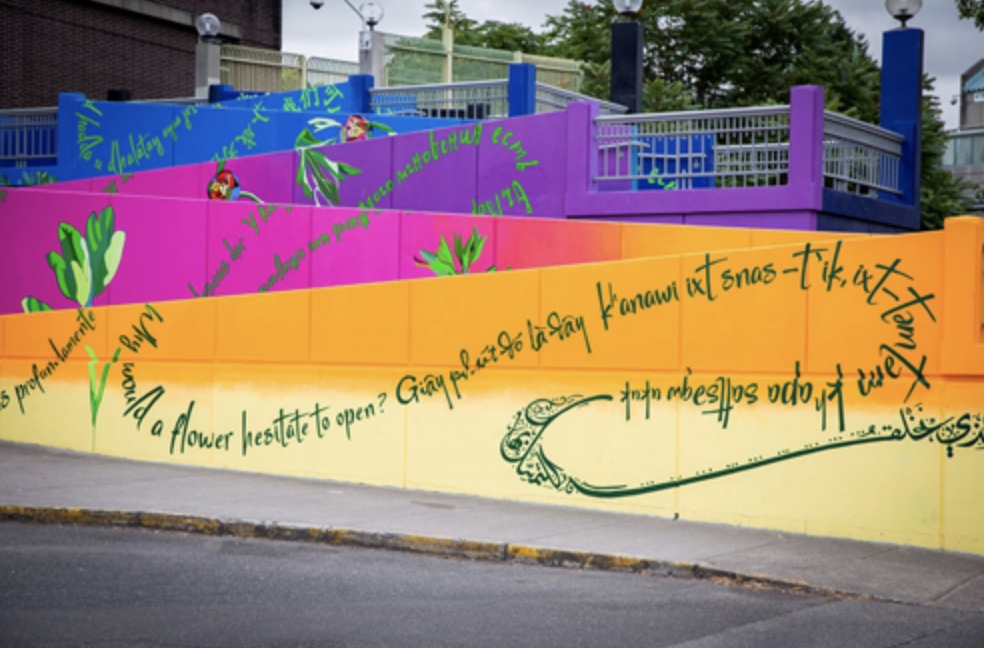
One of the most well-known pieces of public art commissioned by TriMet is the mural at the Hollywood Transit Center created as a memorial to the victims of the 2017 MAX stabbings. But TriMet has commissioned public art all across its network, and not just colorful murals. From patterns etched into bus shelters to sculptures along MAX lines that reflect all the destinations light rail can take you, TriMet has curated a public art gallery across the region.
Waiting at a bus or MAX stop in the rain is made just a little better when you have some cool art to look at. Check out TriMet’s new public art database to get a glimpse of all the creativity they’ve sponsored over the last 25 years.
In their latest call-for-artists, TriMet says they want to “expand the range of artistic and cultural expression represented in the region” and are particularly encouraging artists who identify as part of a historically marginalized culture to apply. Applicants must live in the Portland region and should have a portfolio of work to demonstrate their skills.
Applications for Black History Month designs are due November 16 and Women’s History Month proposals are due November 21. If you’re selected, you’ll need to be able to complete the project no later than the beginning of January. TriMet will pay selected artists a $4,000 design fee upon completion. Here’s the link to more information.
Hope to see your art on the bus next year!
The Portland Police Bureau says a 47-year-old woman is in the hospital with life-threatening injuries after she was involved in a collision with a car driver in southeast late Friday night.
According to a police statement, it happened around 11:17 pm in the southernmost lanes of SE Division and 92nd. They say a 25-year-old man was driving a Toyota Camry eastbound on Division when the collision took place.
The PPB statement also included speculation that the bicycle rider, “may have disregarded traffic signals” and that “weather-related visibility” could have been a factor. The investigation into the crash is ongoing, so it’s not clear why they felt the need to make any judgments about fault at this time.
There are standard, unprotected bike lanes on 92nd Ave in both directions at this location. Both streets have a maximum speed limit of 30 mph. And due to its proximity to I-205, this section of Division is managed by the Oregon Department of Transportation.
It’s notable that this is one of the first serious collisions on Division since TriMet and the City of Portland completed the $175 million Division Transit Project. The Portland Bureau of Transportation also recently completed their $13 million Outer Division Safety Project that included changes at 92nd. Among the recent upgrades have been new pavement and street lights for better visibility.
We’re still trying to learn more about how Friday collision happened. If anyone has more information, please get in touch.
Welcome to the Comment of the Week, where we highlight good comments in order to inspire more of them. You can help us choose our next one by replying with “comment of the week” to any comment you think deserves recognition. Please note: These selections are not endorsements.
Portland, the city where even public process has a public process.
Our article, PBOT advisory committee reform is underway, but participants have questions,
prompted a number of educated and informed comments.
A paragon of public process, from neighborhood associations to advisory committees to stakeholder committees to a class on training advocates (the PBOT/PSU transportation class), Portland puts Portlanders front and center.
But for what purpose?
That question came up early during a workshop last week on restructuring the city’s modal advisory committees: freight, bicycle and pedestrian. Judging from the feedback at the workshop, and from the quality of our comments on the topic, at the very least, one could say that Portland’s public processes produce a public very educated about transportation.
Luke’s comment expressed a thought that comes up regularly: They know what to do, why don’t they just do it? Because a lot of volunteer time goes into public participation, so many of us have put in the hours.
Here is what Luke wrote:
“I’m still inclined to think that this emphasis on public engagement above all else is, ultimately and most importantly for those who emphasize it, a great way to defer action. Think back to that (by now) infamous Streetsblog post from the consultant out of Boston going to Amsterdam and claiming Boston’s process was better because it “centered marginalized voices”…even though it’s much harder to get around Boston without a car than it is Amsterdam.
We already know what works for improving general mobility; all we need to do is look across the pond–at this point, either pond–to see it. Motorist voices’ need to be ignored, and those who claim that autocentric infrastructure and urban forms will work if we build them out enough are either ignorant or willfully lying.
Enough with the committees, the public outreach, the community surveys, the reform panels. Just stop building car-dependent suburban sprawl and stroads; stop widening highways. Build compact, walkable/bikeable/rollable towns and cities; nothing else will work without excluding the poor and the vulnerable, bankrupting us all, destroying the planet, and socially isolating us all.”
Luke’s comment can be found under the original post. Thank you Luke and everyone else for commenting.
Bike Tour Guide
Trek Travel
Bike Tour Guide
Ambassador, leader, concierge, bike mechanic, host-with-the-most, friend, team player. If these words inspire you, see if you have what it takes to be a TREK TRAVEL GUIDE!
Is your idea of an office more like the view from a bike?
Do you have a passion for sharing epic adventures with others?
Do you make challenging situations look easy?
If you answered yes to above questions, then let your adventure start here! TREK TRAVEL is hiring vibrant, adventurous, & hospitality-focused people to join our team in leading guests on world-class cycling vacations around the globe. If you have a passion for travel and cycling, are proficient in bike mechanics and fluent in English, apply today!
During a typical day, we are extremely organized and flexible. We master trip logistics, manage trip finances and represent Trek Travel with subcontractors. We educate our Guests on safe biking techniques, enrich their cultural understanding, motivate those who wish to challenge themselves, pamper those looking for the ultimate in luxury, and provide vacations of a lifetime for all. This is simply the beginning. Do you have what it takes?
By the time you read this you will have likely seen many traffic safety PSAs. And for good reason. Halloween tends to be one of the deadliest nights of the year for traffic collisions — as much as 43% more deadly according to this story from Bloomberg.
But most of those well-intentioned messages are focused on the wrong thing: pedestrians. People walking are definitely worthy of concern, but they are not unsafe. The people who are unsafe are the ones driving multi-ton steel vehicles with terrible visibility, overpowered engines, and a tendency toward distracted, selfish behaviors.
So this message is for them…
Please consider not driving at all this afternoon or evening. The streets will be full of human traffic everyone will be safer if cars were simply not on the road.
If you must drive, please consider these tips:
Thanks for helping keep our streets safe for everyone. Have a fun Halloween!
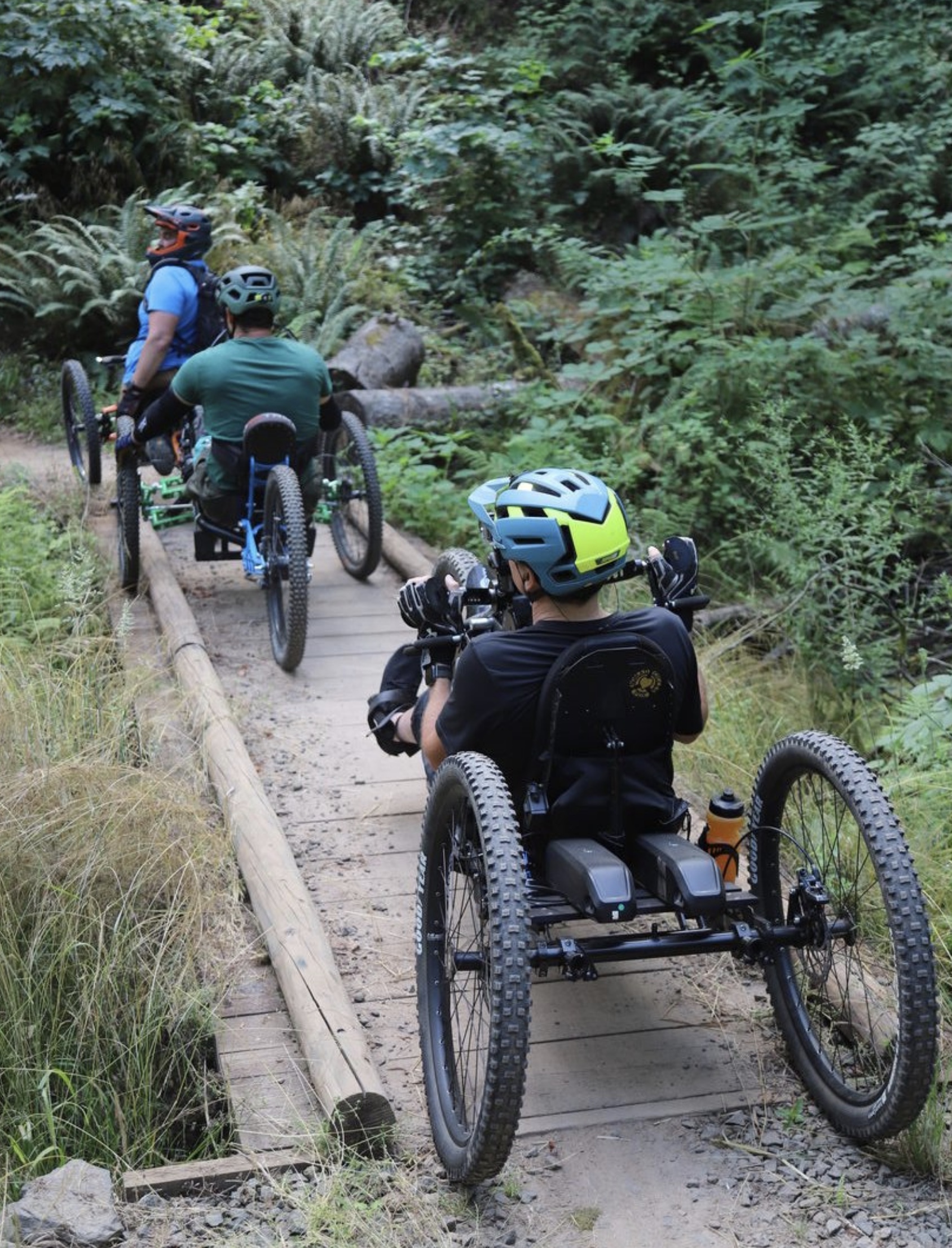
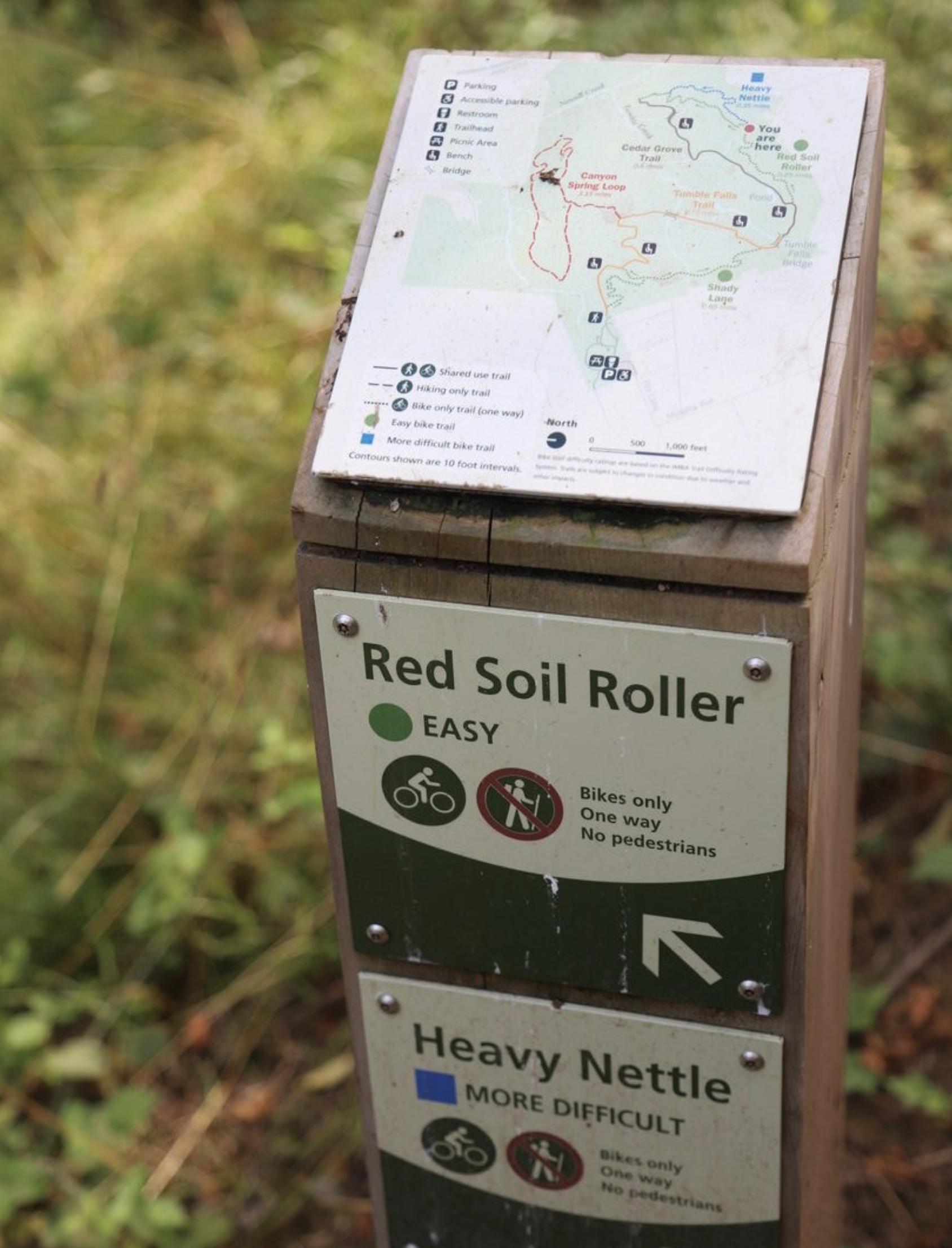
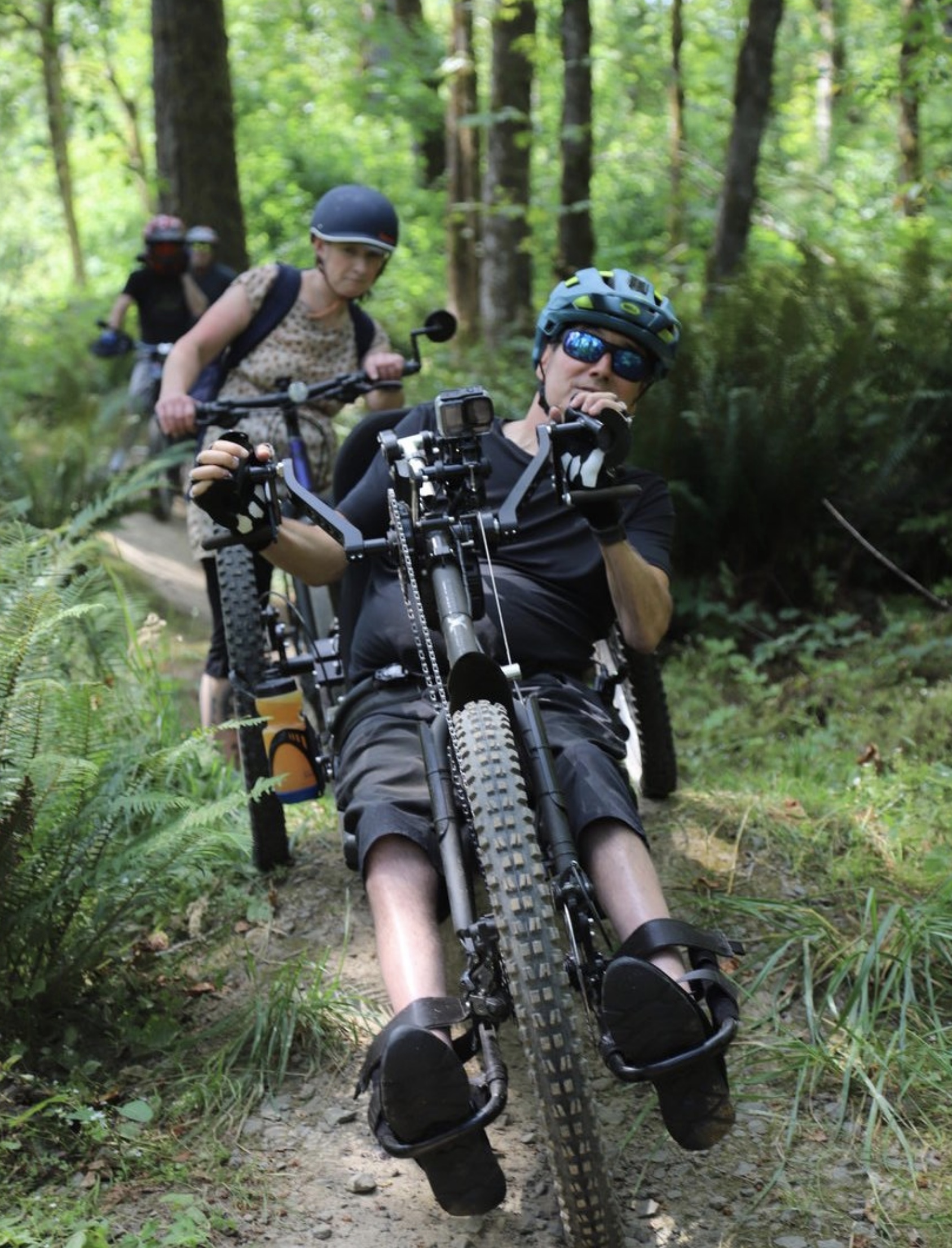
— This story by Jamie Mathis originally appeared on OregonMetro.gov.
On a late summer morning, the sun is just starting to heat up the parking lot at Newell Creek Canyon Nature Park as three bicyclists get their gear together to hit the trails.
There are the standards – helmets, bike gloves – and then the bikes themselves, which are anything but standard. The three-wheeled vehicles sit low to the ground, with the rider’s legs stretched forward to the front and are strapped in, similar to a recumbent bicycle without pedals. One has a chair-like seat; another has a saddle that tips the rider forward over the front two wheels. These are adaptive mountain bikes (aMTBs), designed to allow people with disabilities to ride on rugged terrain.
“The huge battle is getting trails we can actually ride,” says Kipp Wesslen, who works for Washington County and has quadriplegia. “This is one of the first places that has had some thought around accessibility put into place. There aren’t that many places within easy distance that we can ride, either because of gates, trail width or camber.”
“The huge battle is getting trails we can actually ride, this is one of the first places that has had some thought around accessibility.”
— Kipp Wesslen
Indeed, until recently even Newell Creek Canyon had a barrier for aMTBs. While the trails had been designed for all-access passage, the gate to the trailhead had been made to have a narrow opening, just enough for an upright bike or baby stroller to pass through – a standard park practice, designed to keep motorized vehicles off the trails. But that opening couldn’t accommodate the much wider wheelbase of aMTBs, which can be upwards of 40 inches.
Max Woodbury, a mapping specialist at Metro who became a quadriplegic in his 20s due to a spinal-cord injury, says that the first time he visited the park, he needed to ask a ranger to unlock the gate in order to start his ride.
“That’s not really accessible,” he noted wryly.
When the park opened, Metro hired a contractor to test the aMTB accessibility of its trails and discovered the issue with the gate. At first, it seemed like it would be a complicated fix requiring a new gate. But park rangers innovated a way to winch the existing gatepost away from the gate, creating a wider opening. Today is the riders’ first time biking the park since the gate has widened – the moment of truth to see if the rangers’ solution has worked.
Once everyone is strapped in and ready to ride, they roll through the gate and pause at the top of the trail. “That’s awesome,” Wesslen notes as each bike cruises easily through.
They start onto the Red Soil Roller Trail, a series of winding switchbacks, which brings smiles to their faces as they prepare for the challenge ahead. Wesslen goes first. His bike allows him to lean forward, with his torso braced by a bucket seat and shin supports.
“You can do a lot of technical stuff on this style aMTB,” says Wesslen. “Anyone riding this has the ability to shift their weight, which makes it better for downhill. It gives you almost the exact same feeling as an upright bike.”
Adaptive bikes aren’t cheap, costing upwards of $8,000 and often closer to $15,000. Thankfully, some nonprofits offer grants to help make equipment more affordable, and the riders say the sport is growing. They generally are able to organize rides at least once a month during good weather.
Along with Wesslen and Woodbury, today’s group includes aMTBer Loehn Morris. He follows Wesslen, successfully navigating a steeply pitched turn. He whoops coming out of it and flies off down the trail to give Woodbury space to attempt the switchback.
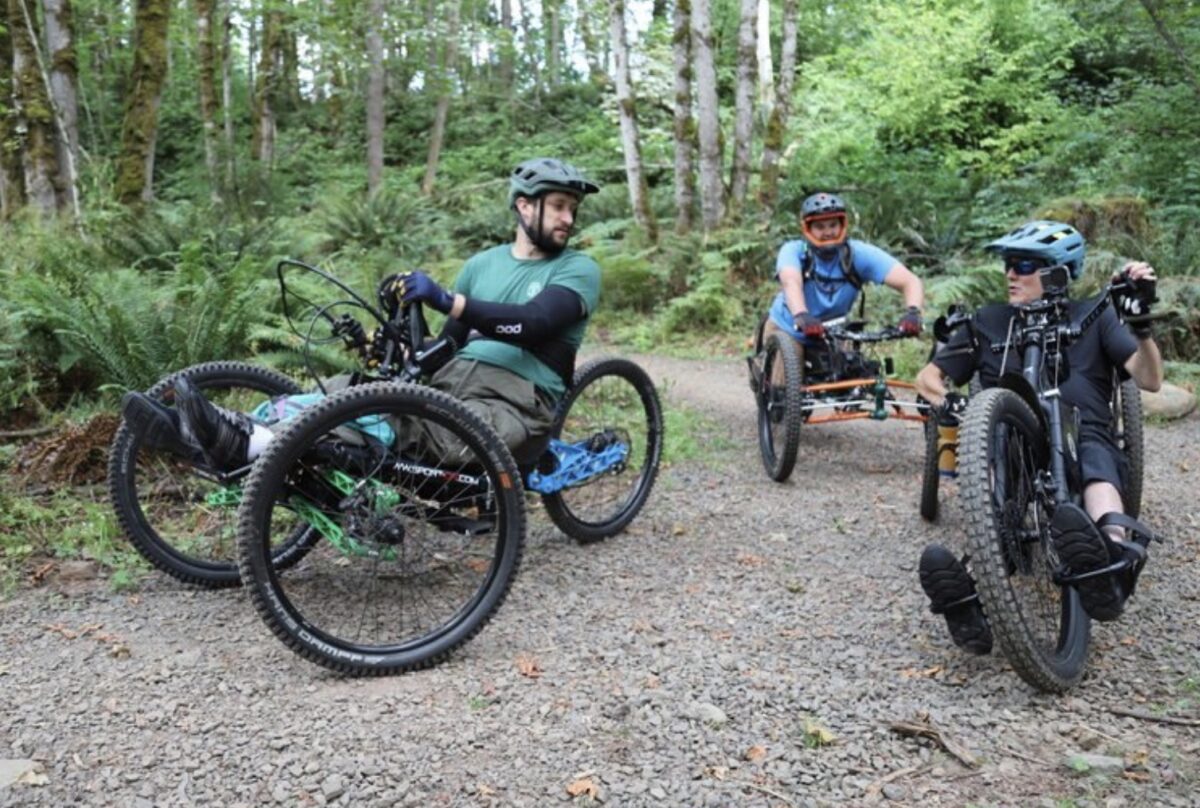
“I went over on this berm last time,” says Woodbury. Spills are one reason why many aMTBers bring an able-bodied biker with them on rides – today, it’s Jean Perkins, a musician and caregiver to Woodbury. She follows the three aMTBers on her upright bike.
Woodbury pauses and studies the trail, debating how to best enter the turn. After talking through several options, he decides to just go for it and see if he can stay upright this time, saying, “Well, this is what makes it fun. It’s challenging.”
Maple trees shade the trail, an important feature for many adaptive bikers. “Temperature regulation is a huge issue because if you are a full-on quad you don’t sweat,” Wesslen explained. “If you get over-heated you can go into dysreflexia, your blood pressure spikes – it’s bad. You typically don’t sweat below the injury site. Being in shade absolutely helps.”
Adaptive bikers have other unique challenges. After several switchbacks, the riders approach a plank bridge with bumpers that are too close together for them to pass between. Their work-around is straddling the bumper and having an outside wheel on the overage that isn’t more than a couple inches wide. One biker rides his outer wheel up onto the bumper and rolls at a cant across the bridge.
Because trails often have hidden hazards like this, aMTB riders take a cautious approach. Before going down a section of trail they don’t know, they queue up and study it piece by piece so they can figure out where the pinch points are, like a steep berm or a rock. Then they decide which moves they need to make the maneuver successful. The goal is to be able to take it at speed on the next lap for the thrill that’s common to all extreme sports.
That’s not always possible. The trails at Newell Creek Canyon are popular enough that a Saturday ride can feel a little like being on the highway at rush hour. As the group lines up to navigate some downhill berms, a biker zooms by them at top speed, creating yet another hazard for them to navigate.
Morris reflects on an ideal environment: “I want a trail where my wheels are totally fine the whole time. This is one of the best, most accessible trails close in we have in the area.”
The riders roll back up the hill to the parking lot, using their e-assists to help with the incline. Each can pass through all sections of the trail, gate and parking lot.
The day’s heat is kicking in and it’s time to go home. The riders strip off their gear and load their bikes back into their vehicles. “Let’s get another ride together soon, guys,” says Woodbury, and the others cheerfully agree.
— Jamie Mathis, Metro
Welcome to the week.
Use code bikeportland22 and save 20% off at ShowersPass.com!
Today’s Monday Roundup is made possible by Showers Pass, makers of quality waterproof rainwear and gear that’s proudly designed and tested right here in Portland!
Here are the most notable stories our writers and readers came across in the past seven days…
Bike share riddle solved? The City of Portland should study Stockholm’s new bike share system, which has managed to sustain its fleet of modern e-bikes with a “ludicrously” low rental price by selling ads on the bikes and eschewing expensive docking stations. (Vice)
Petrol state: Americans are politically and emotionally tied to gas prices and it’s largely because most of us are tied to our cars. (NY Times)
Urban cargo: The adoption of electric cargo bikes to make last-mile deliveries is growing in the U.S. and around the world and it could save lives and fight climate change. (Transport Policy Matters)
Don’t believe the hype: Very happy to see USDOT Sec. Pete Buttigieg talking sense about “self-driving” cars, which have never worked well and are not likely to work well for a long time. (Jalopnik)
Elon’s folly: If Mr. Musk wasn’t so eager to dupe his acolytes into buying Teslas, he might have avoid killing and injuring some of them who used the “autopilot” feature, only to find out it doesn’t work. (Reuters)
Too good: Denver’s much-ballyhooed e-bike rebate program has been so successful officials have been forced to pull the plug due to a lack of funding. (PBS)
Check out a bike: There are over 30 municipalities in the U.S. where people can borrow a bike with their library card and it’s a growing method of getting more butts on bikes. (Next City)
Don’t pass me bro: In the Belgium city of Bruges, there are over 8 miles of streets in the central city where it is now illegal for a car driver to pass someone riding a bike. Makes perfect sense to me. (Road.cc)
Republican shenanigans: Amazing story in Philadelphia where blatant politicking by petty Republican lawmakers has killed a previously non-controversial bike lane bill that advocates were close to passing. (Huff Post)
Thanks to everyone who shared links this week.
Weather be damned, we know some of you plan to dress up and ride your bikes for Halloween. And why wouldn’t you? There’s a slew of spooky cycling soirees on the schedule this weekend, including the always crazily-costumed ‘Cross Crusade race on Sunday.
So I delved into our photo archives to pull out some of the best outfits we’ve seen over the years. Hopefully these give you some inspiration and ideas for how to build your look. Have a great weekend and we’ll see you back here Monday morning!
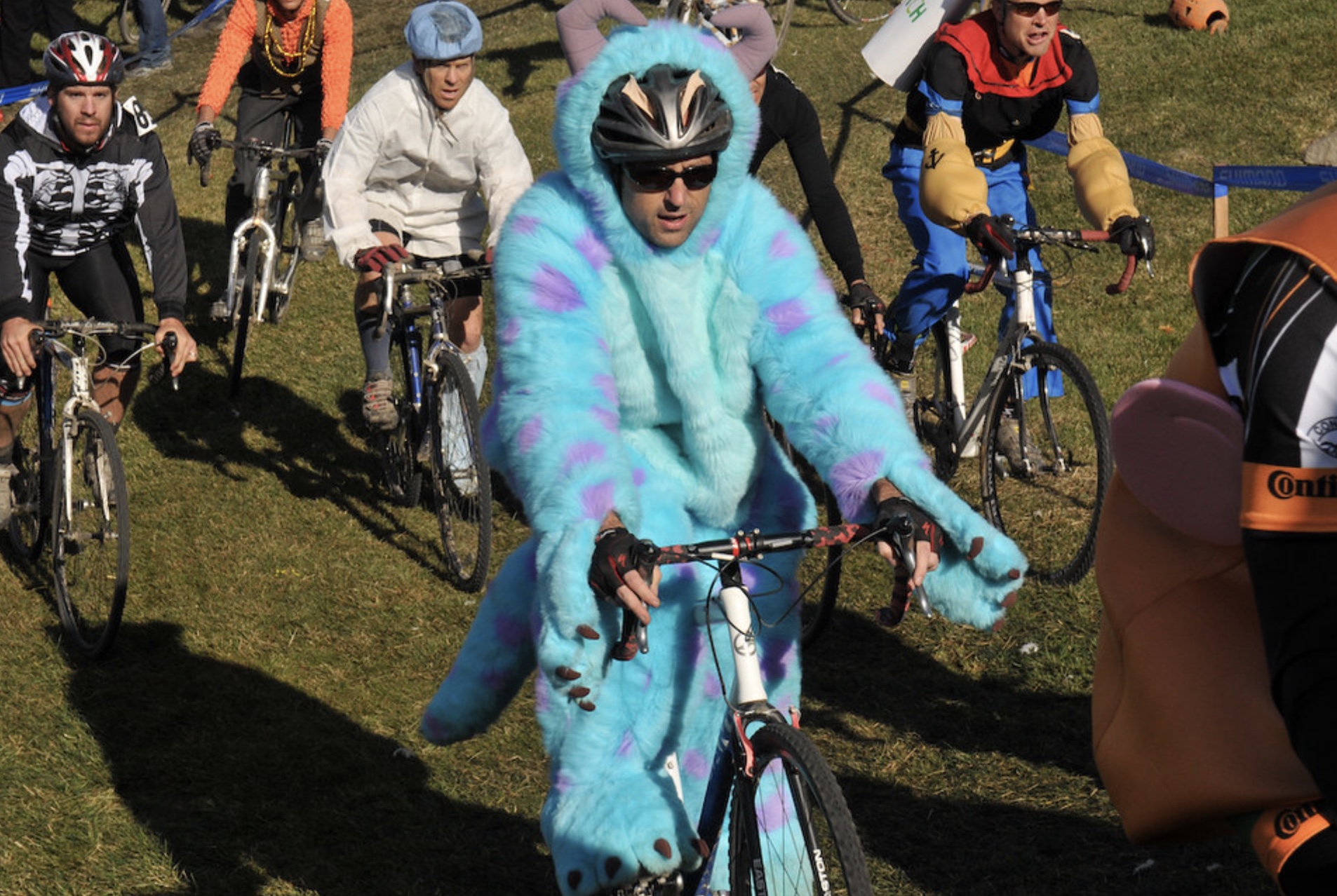

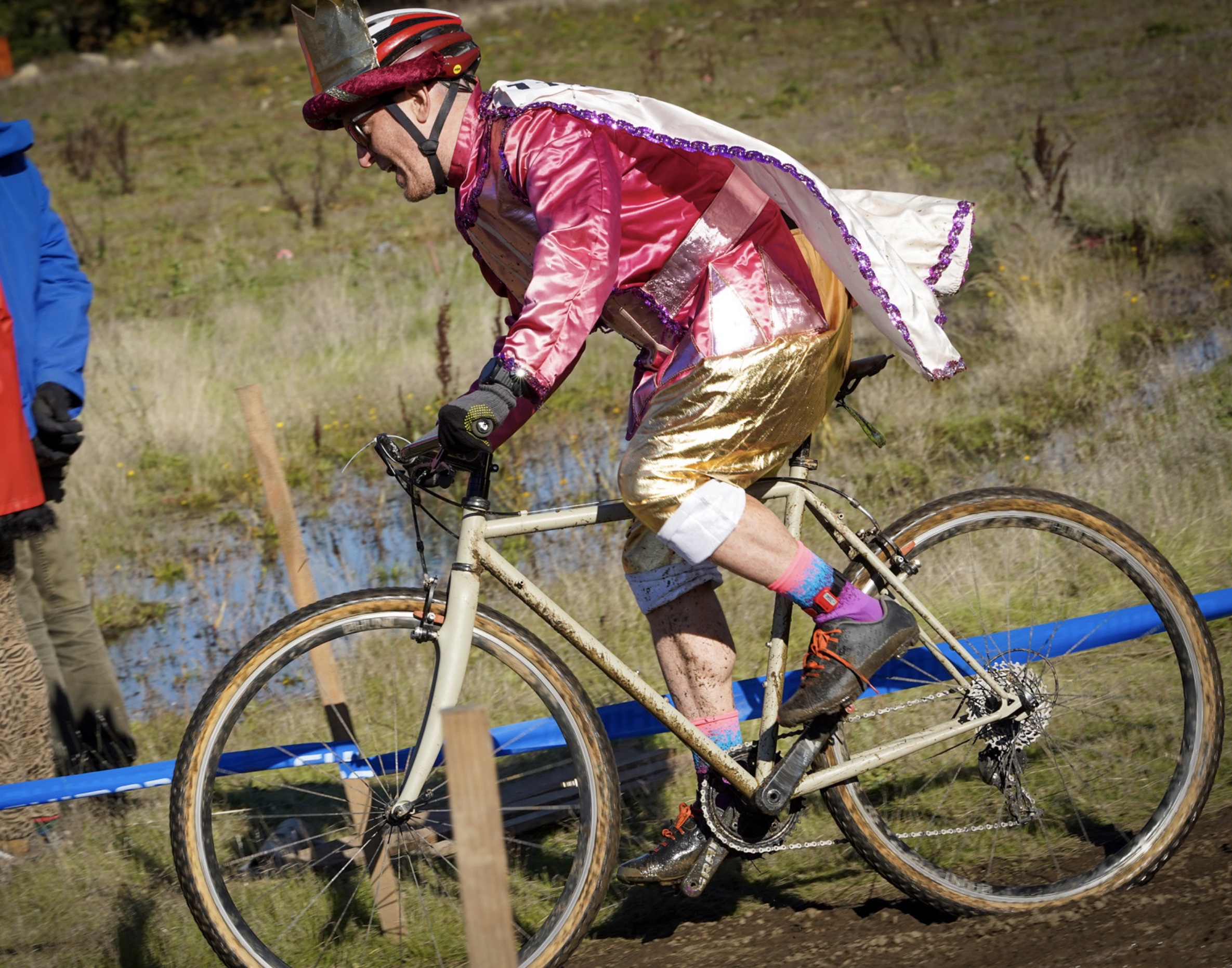


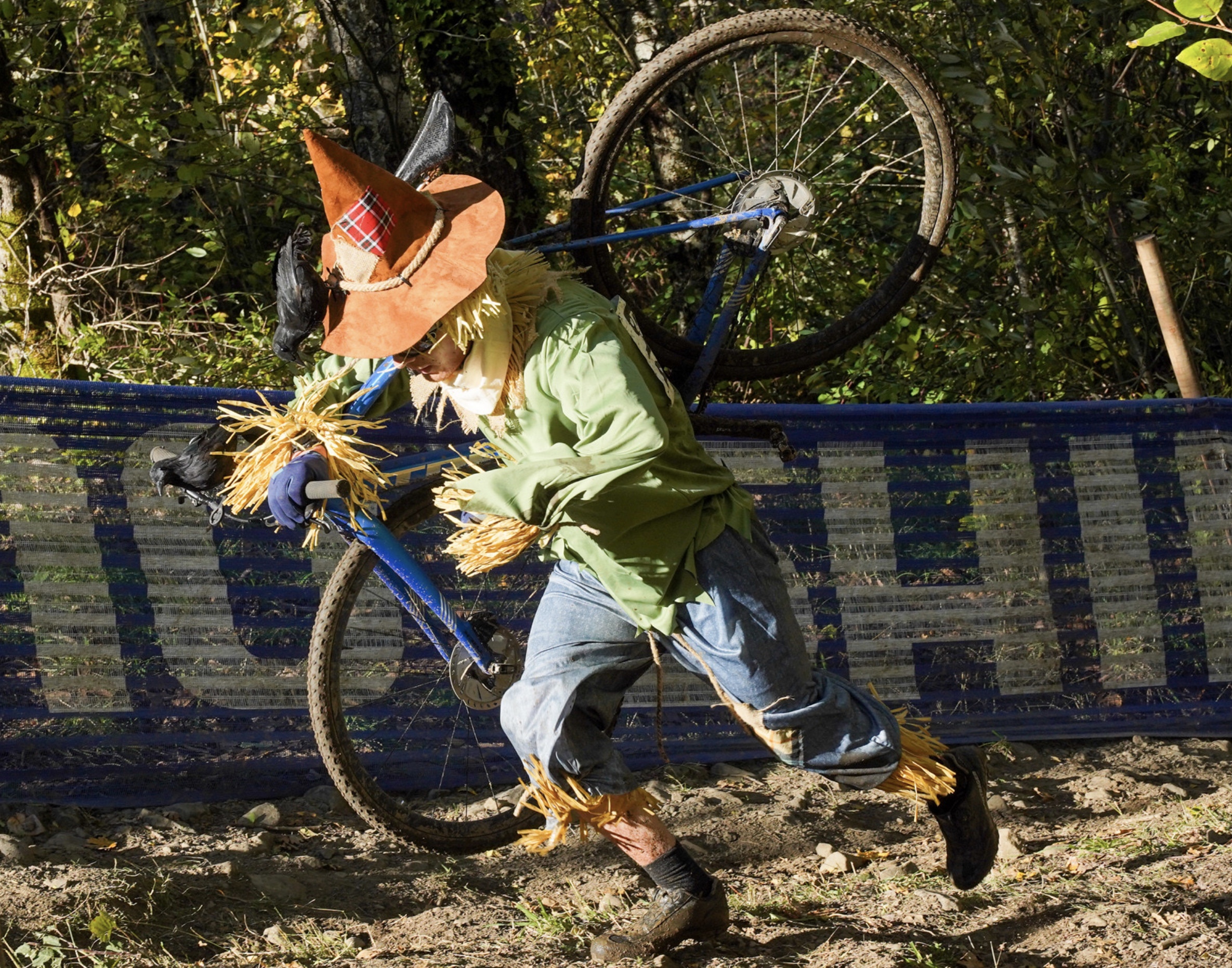
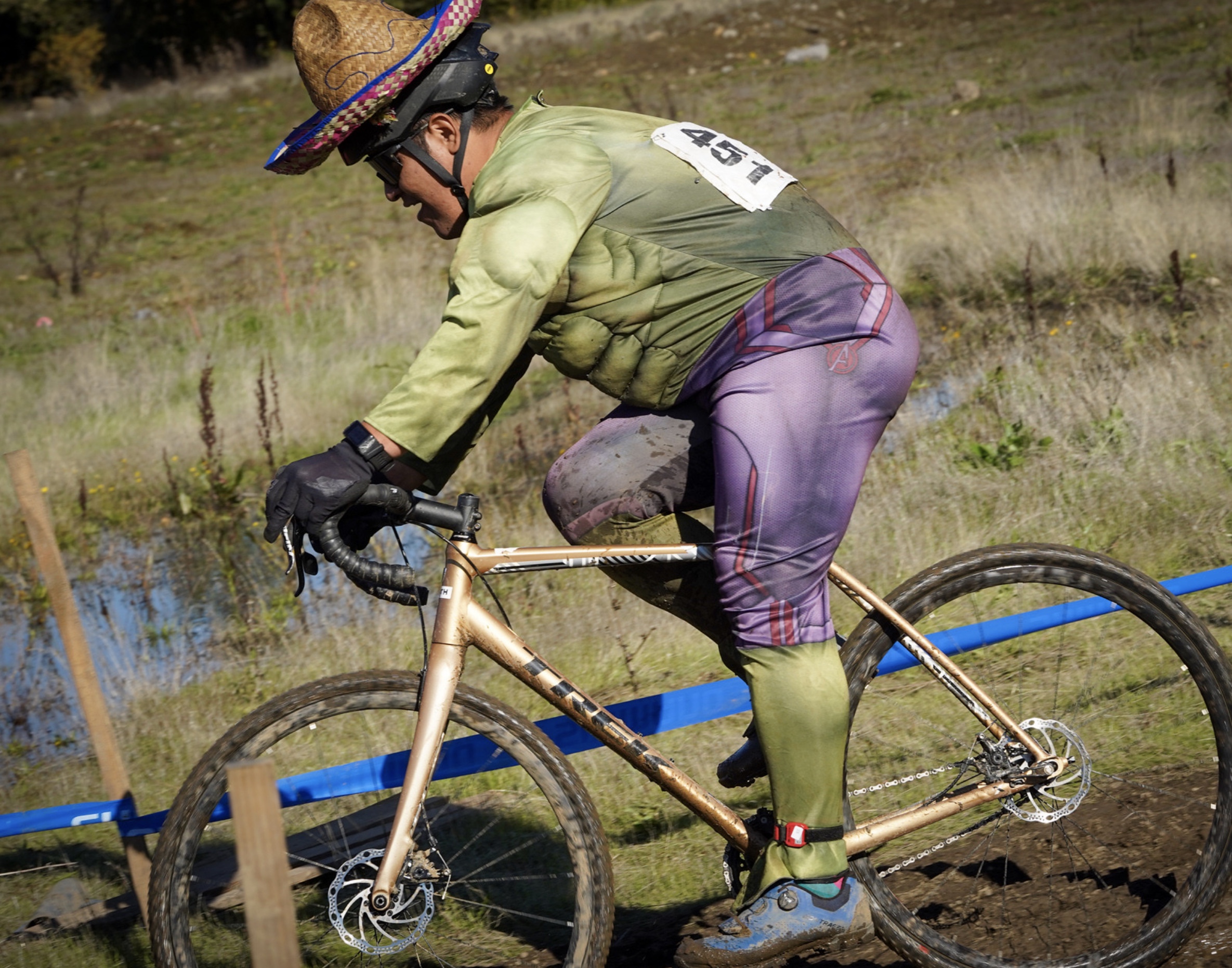

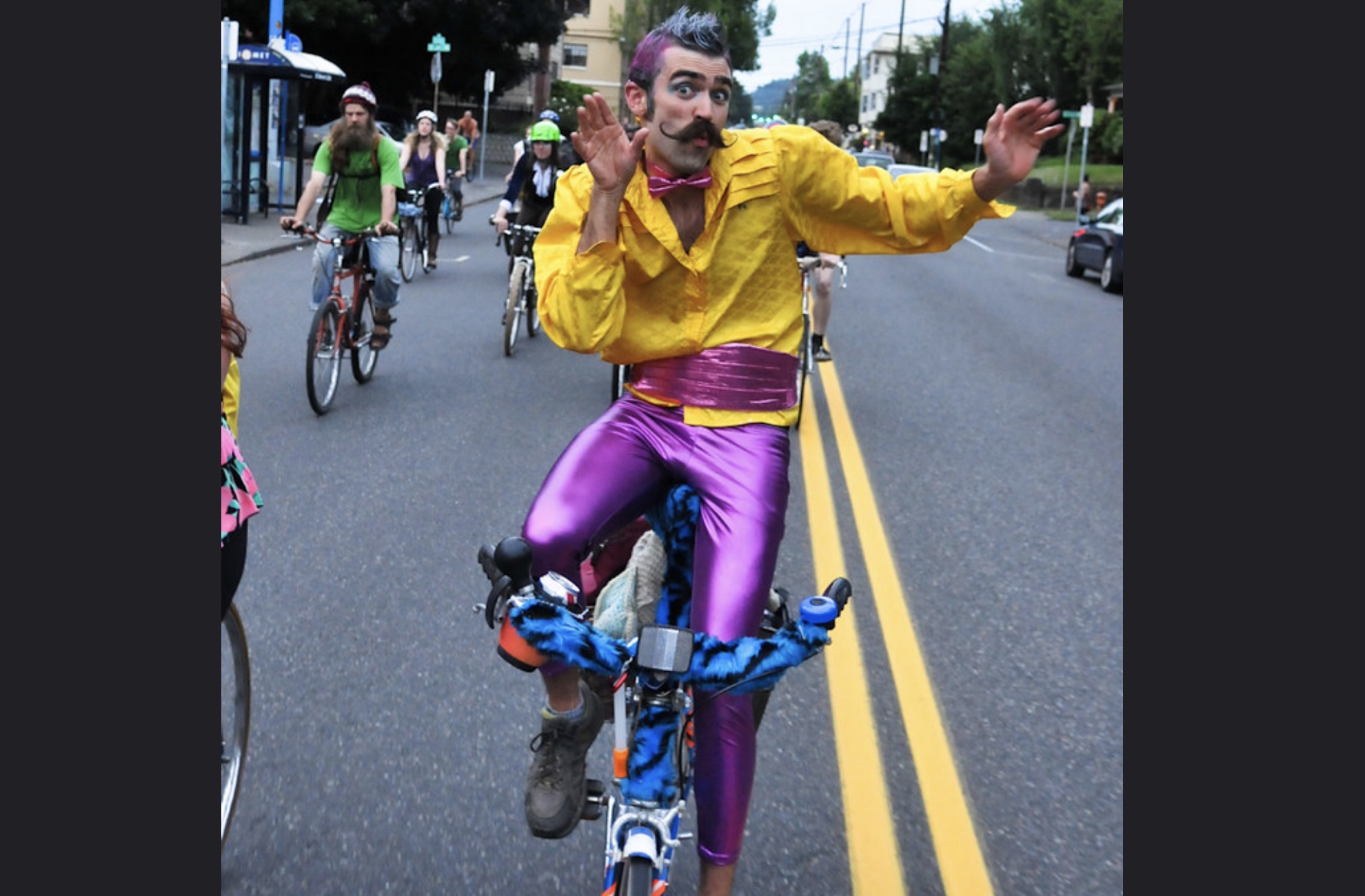
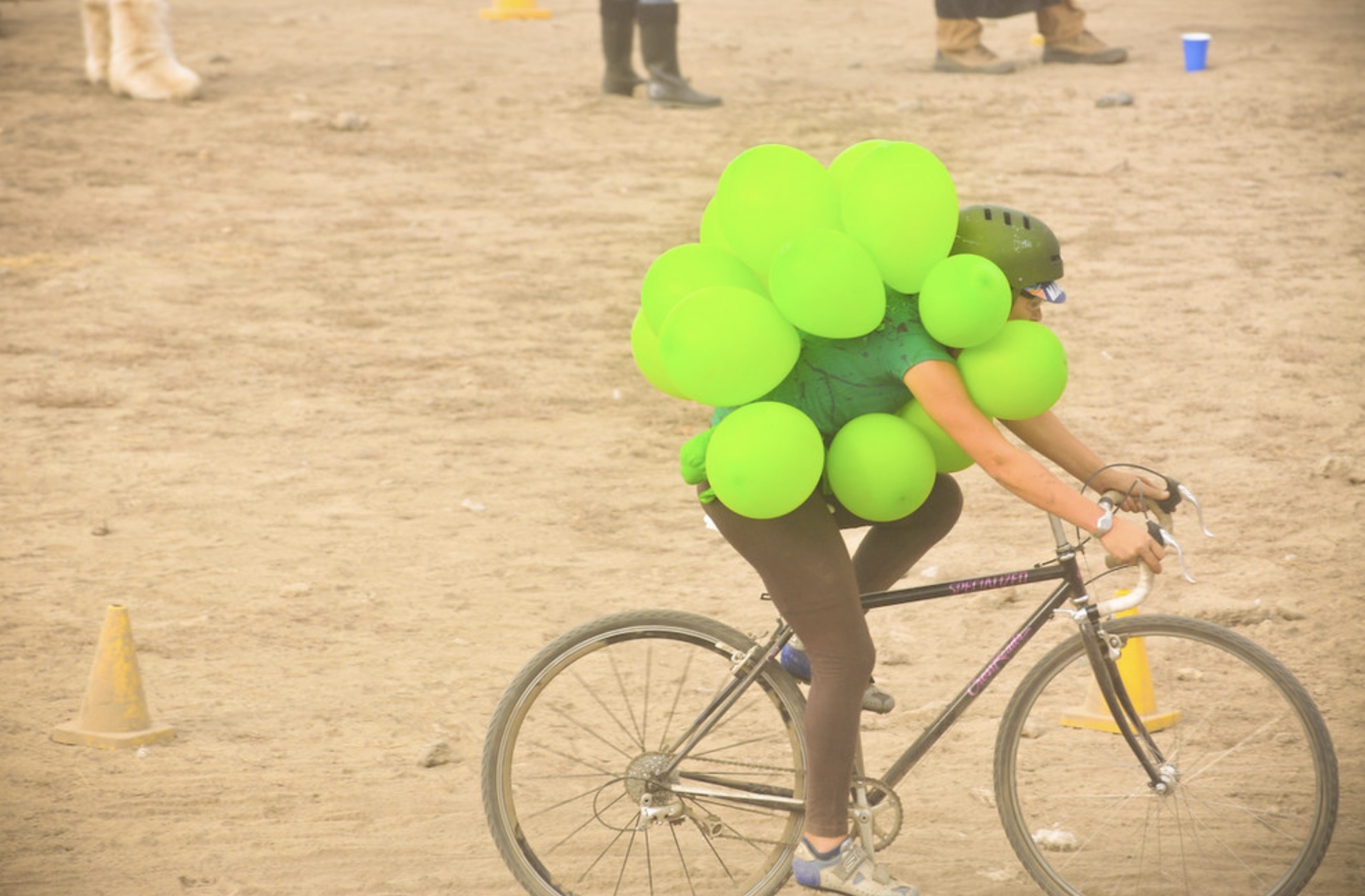
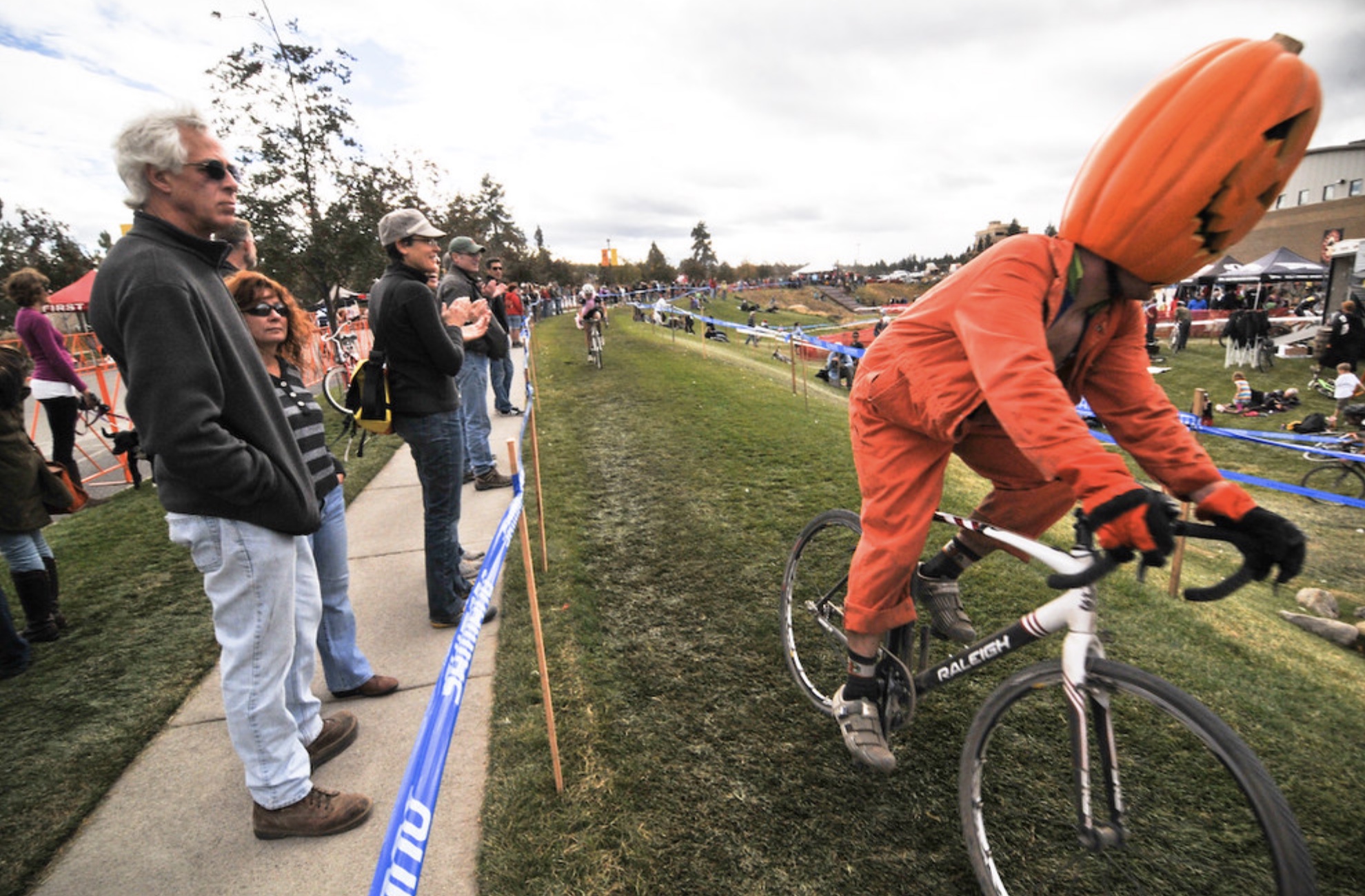



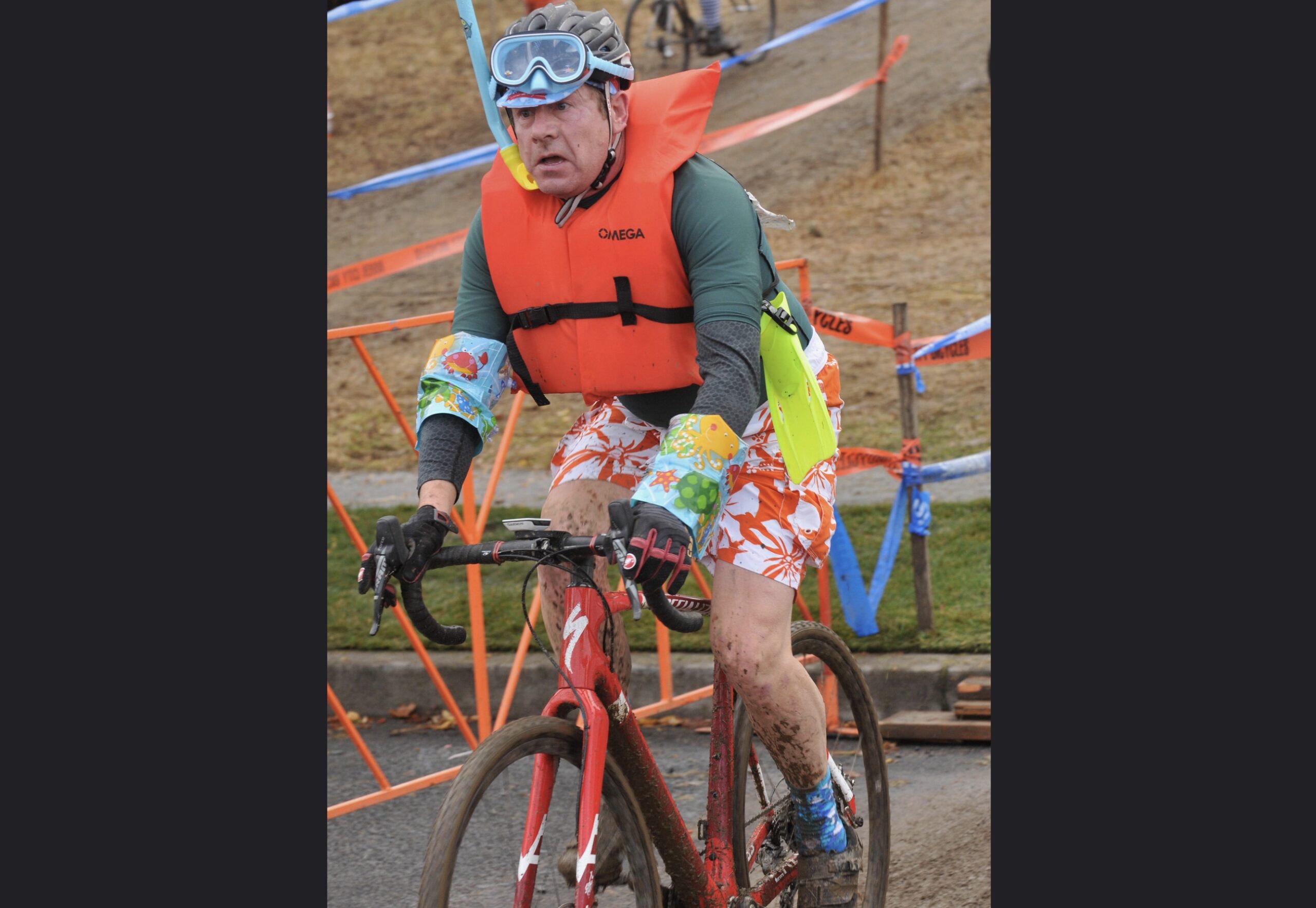

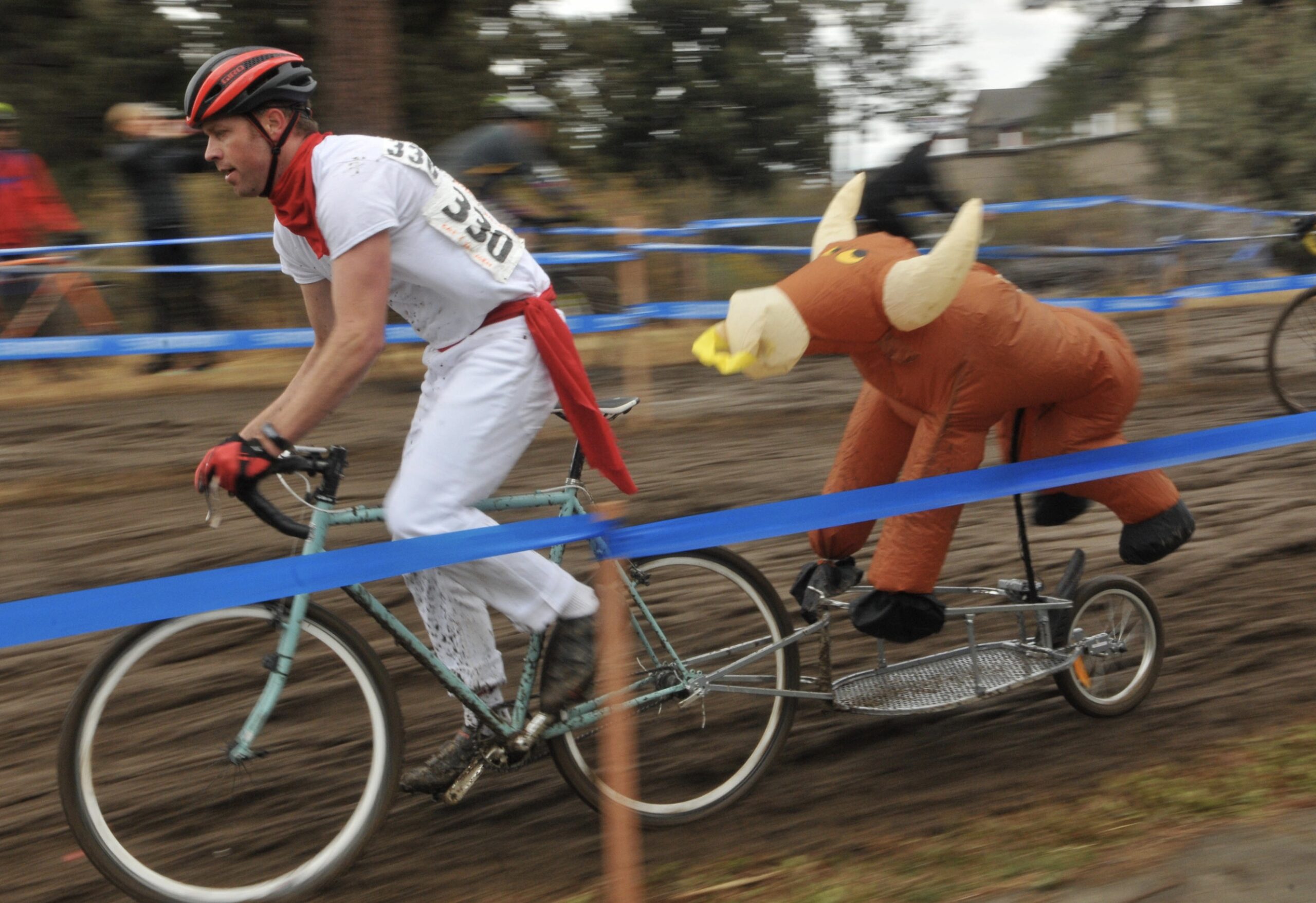

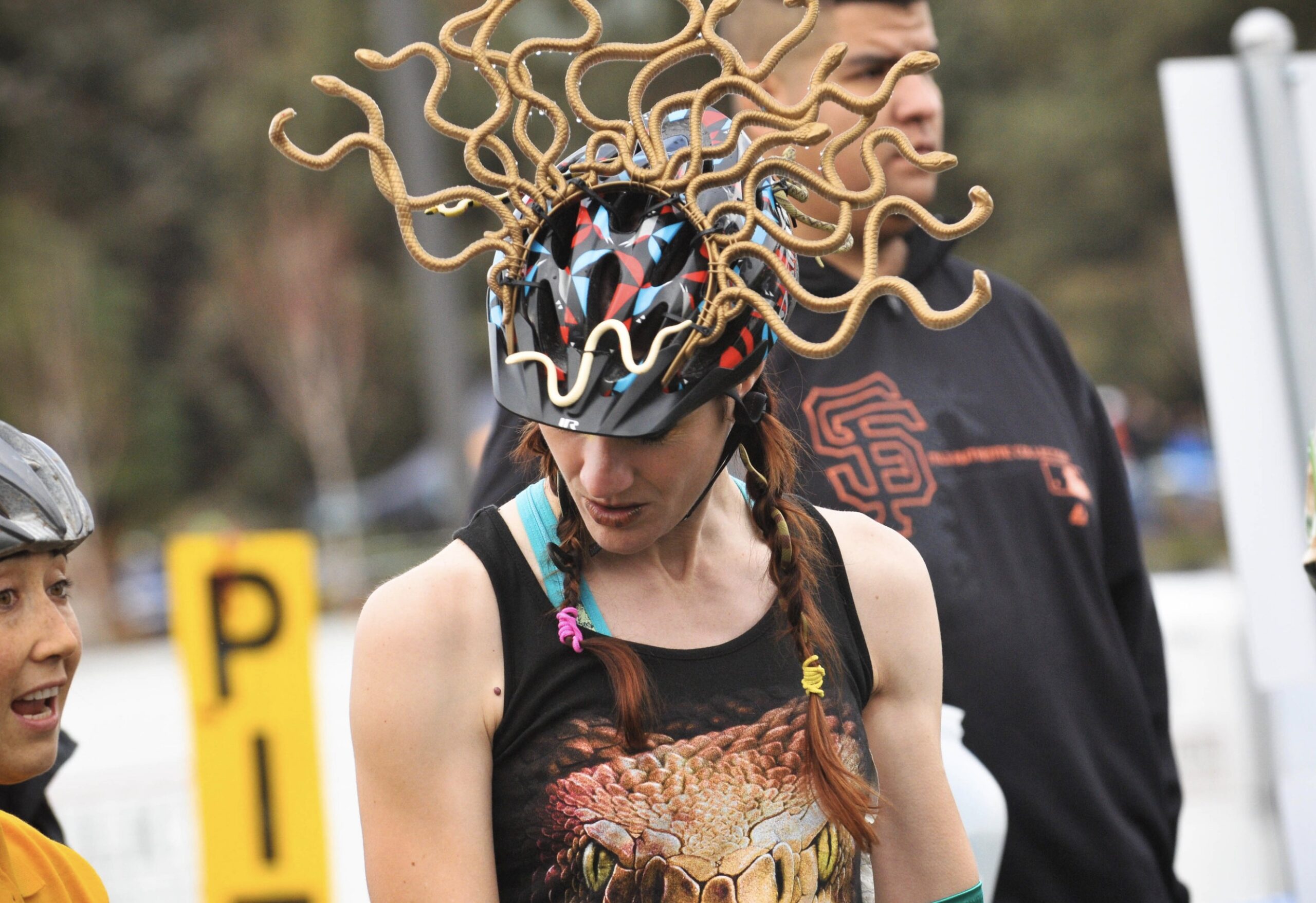


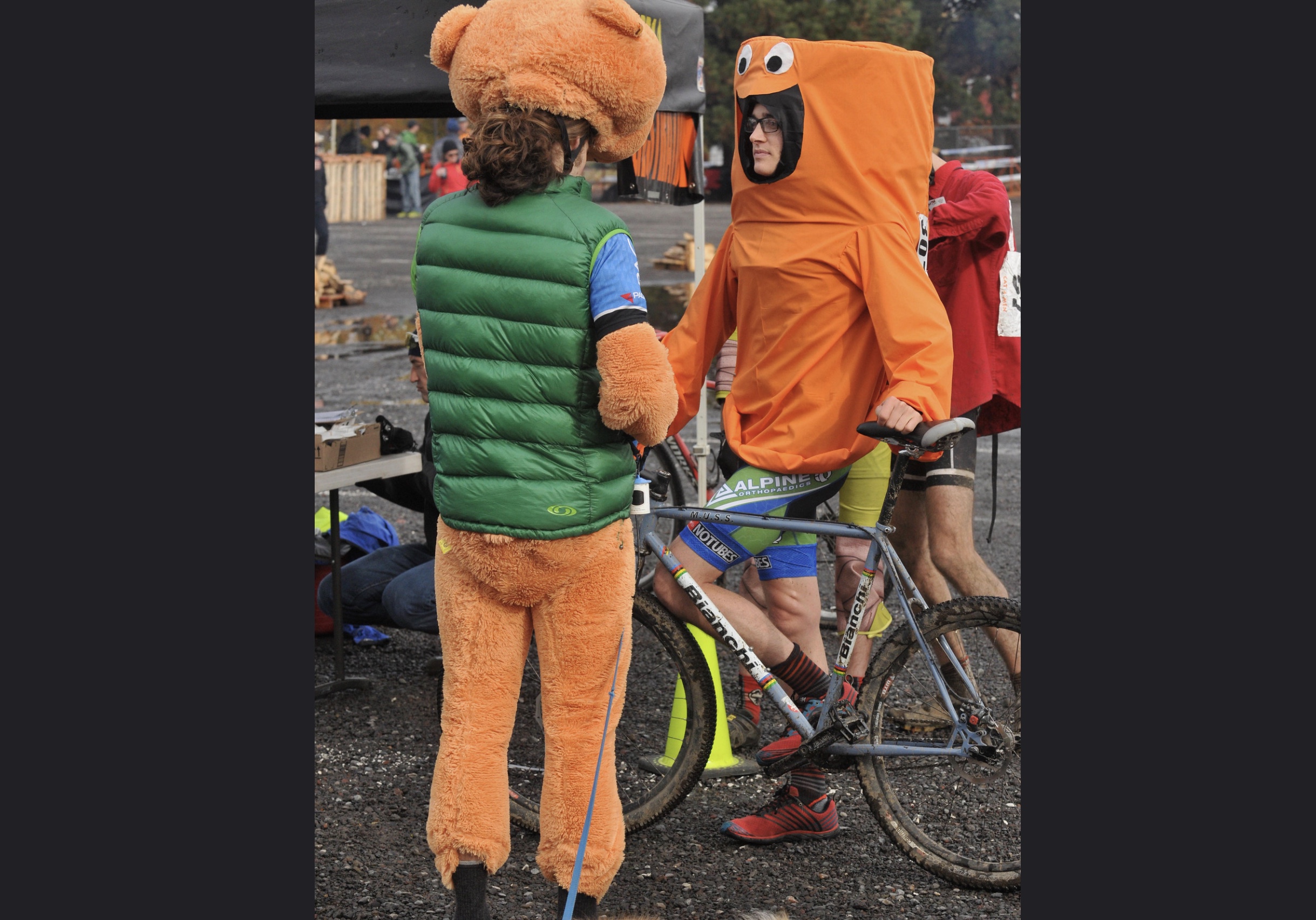
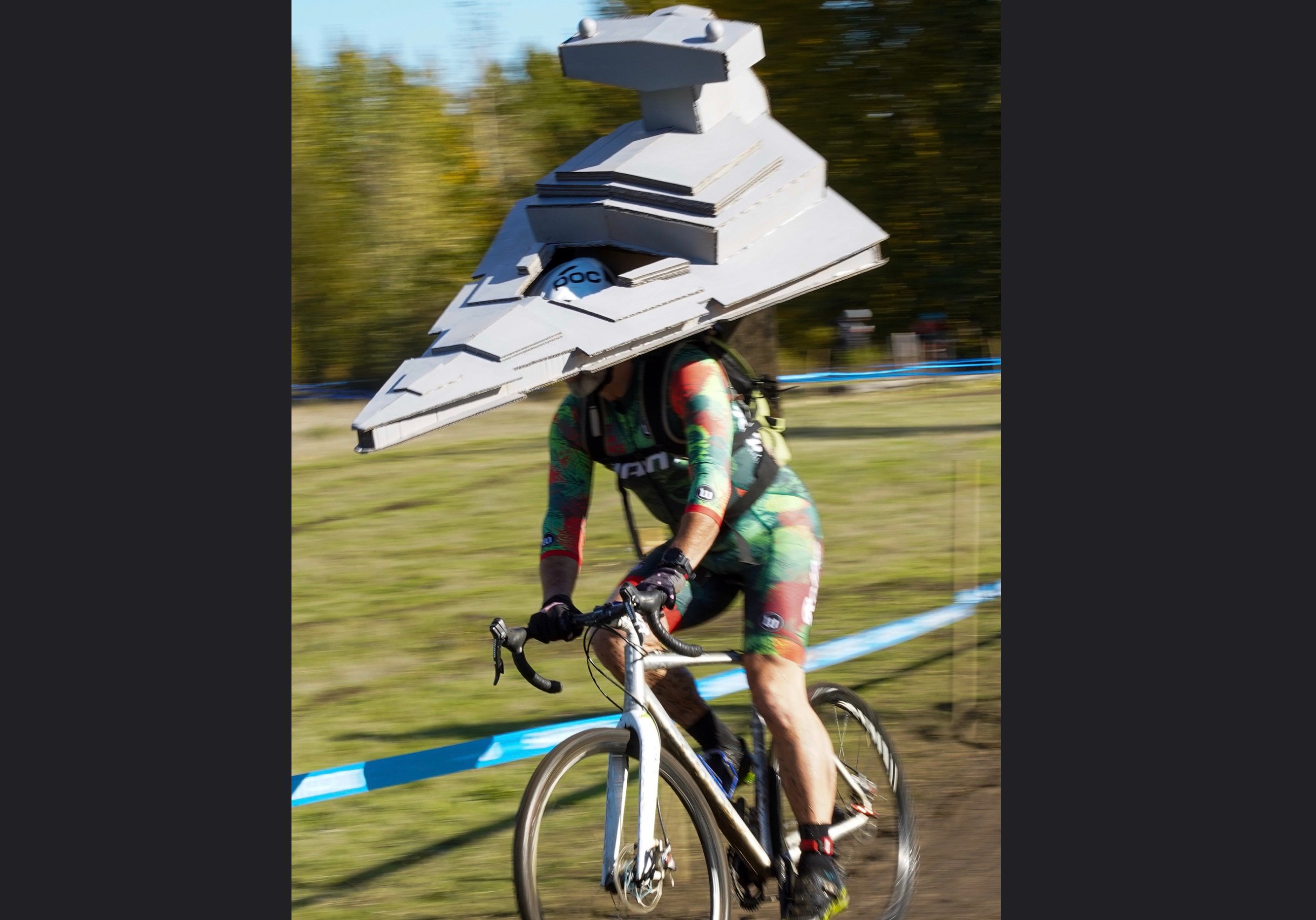
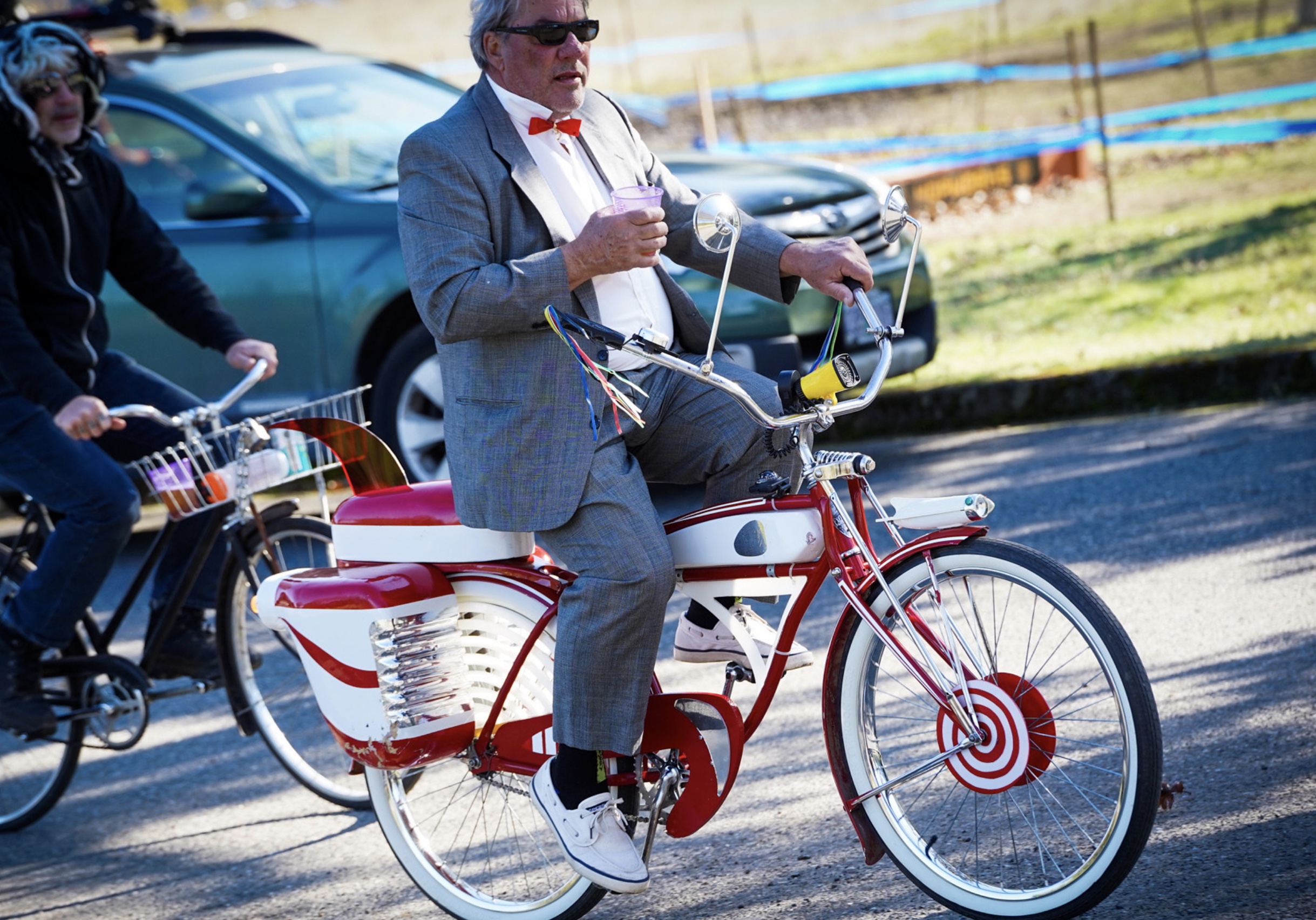
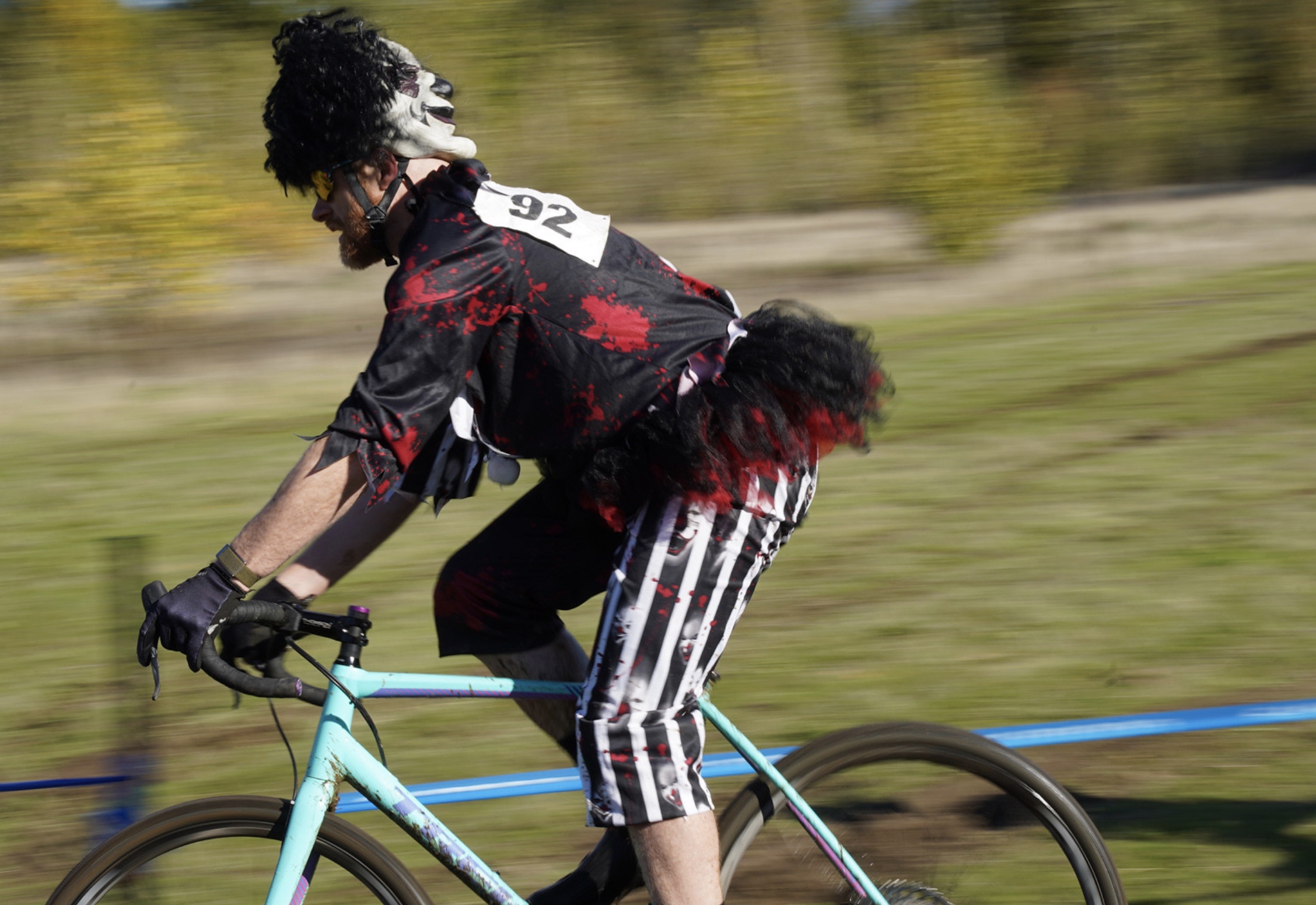
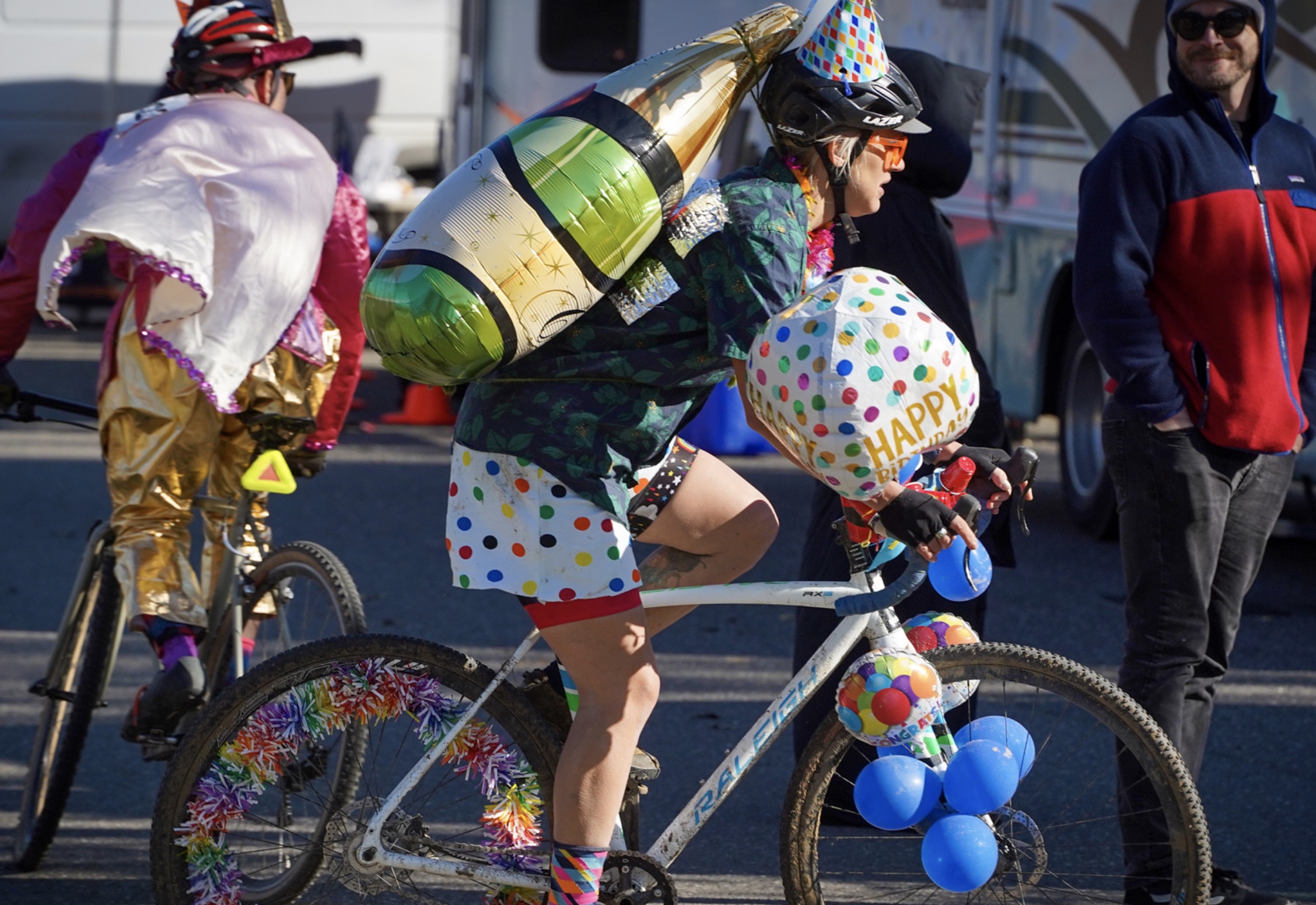
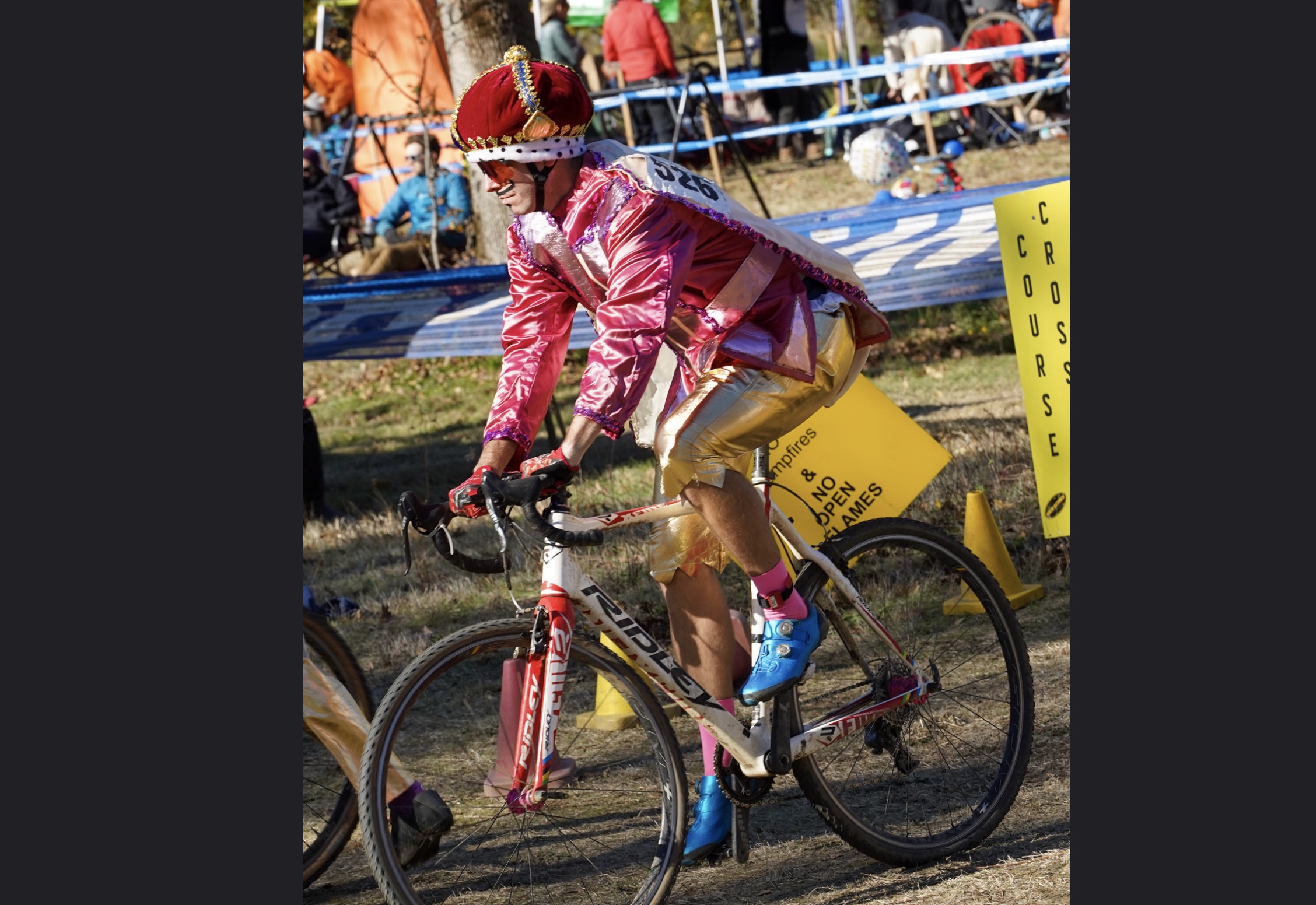

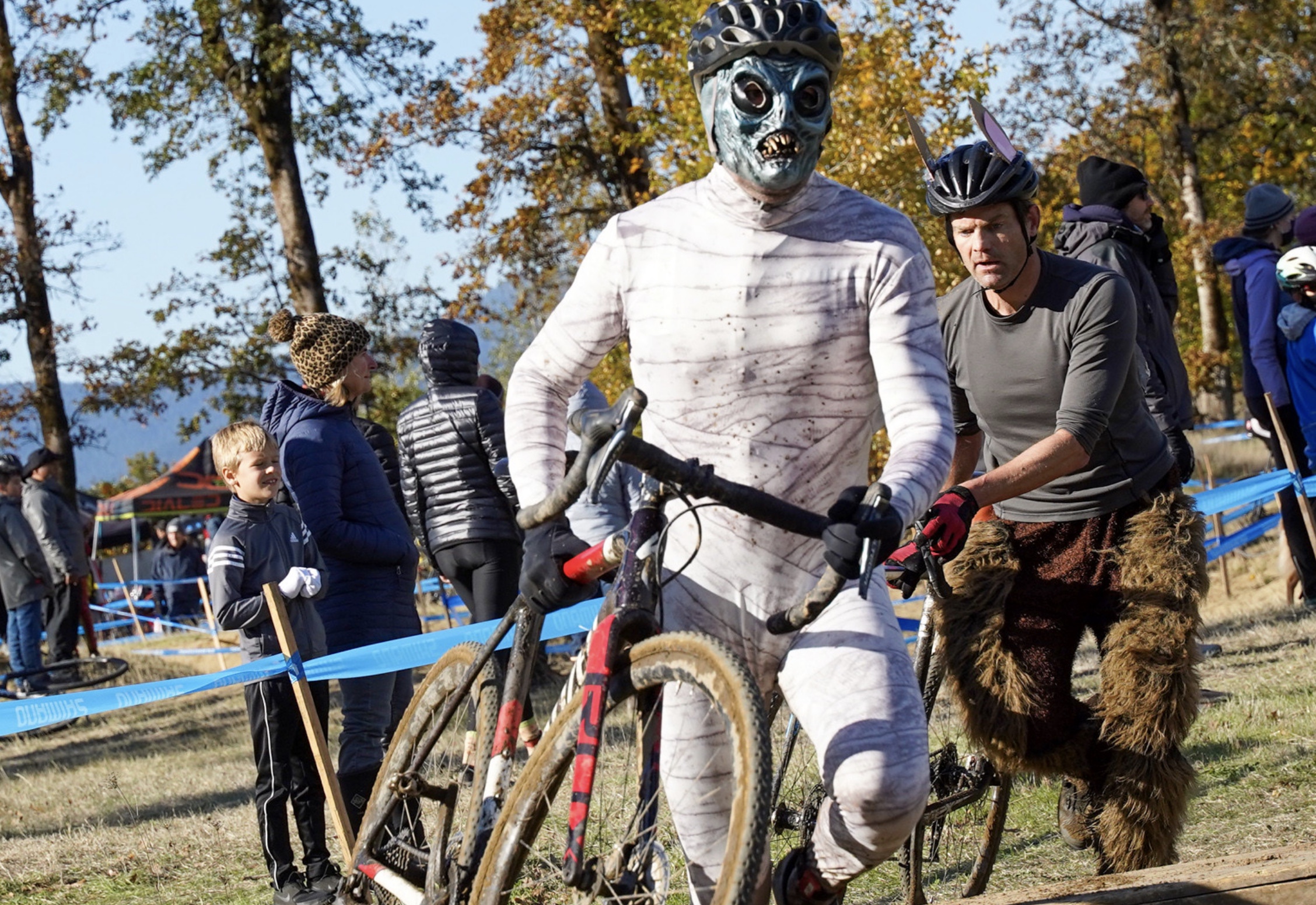
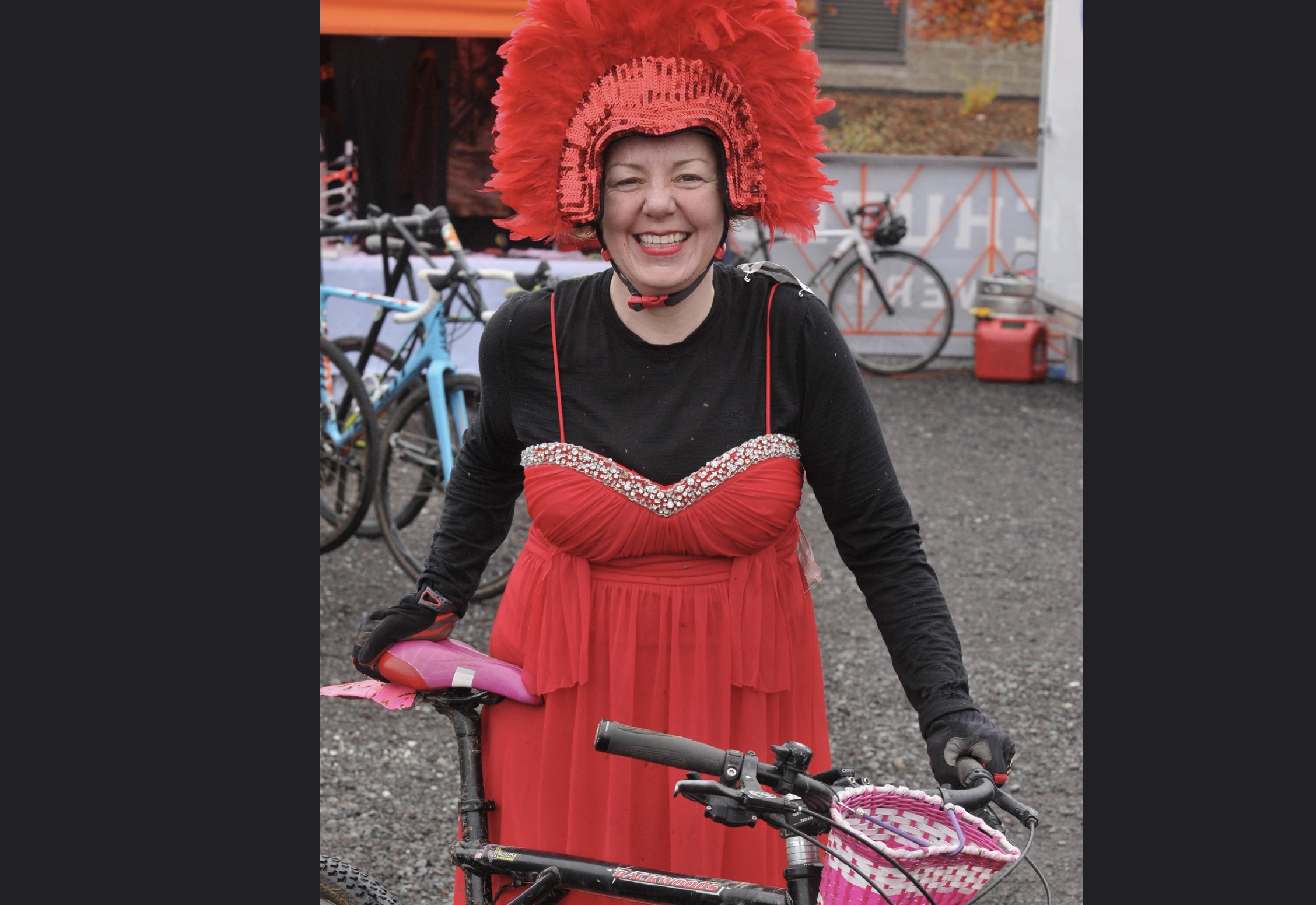

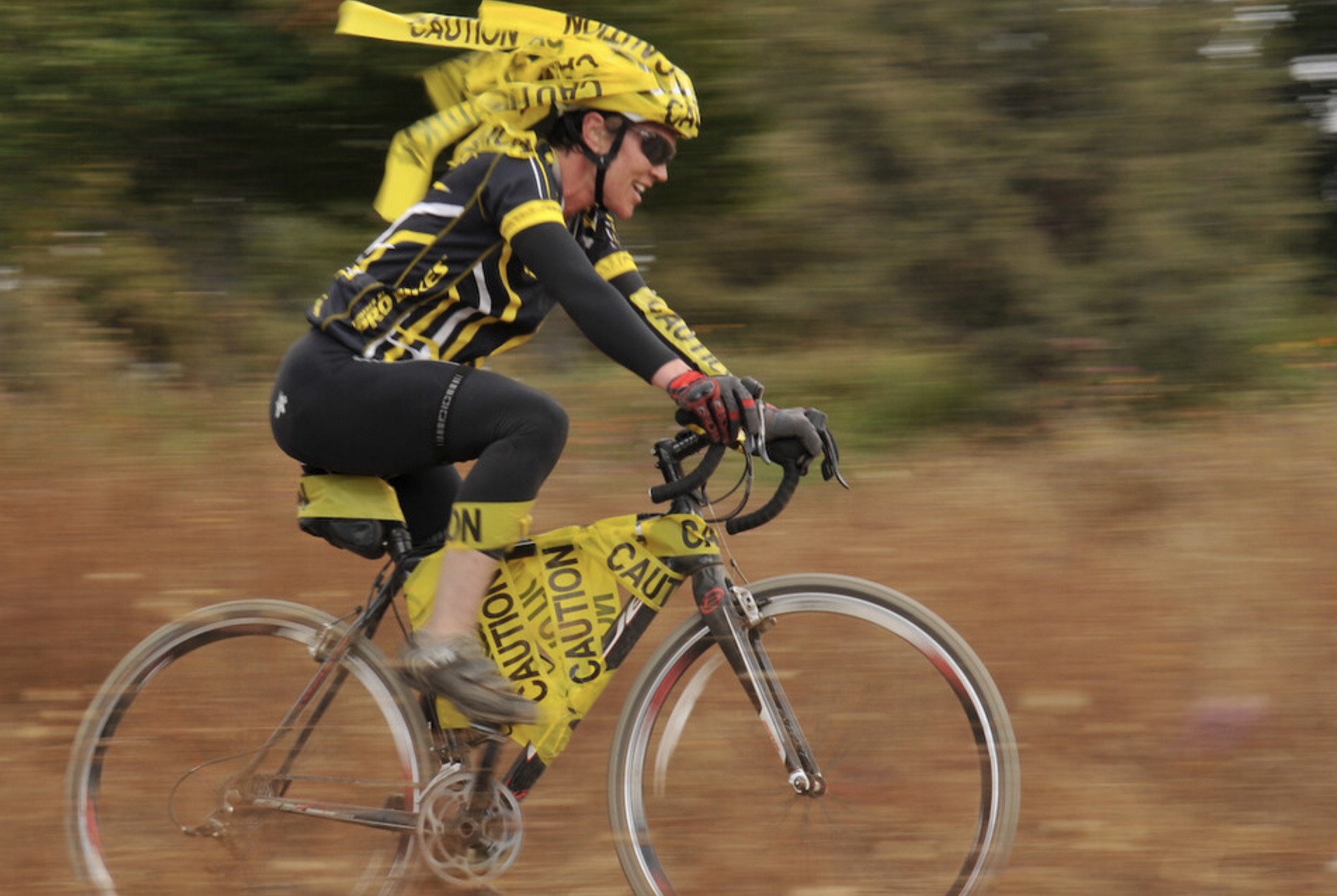

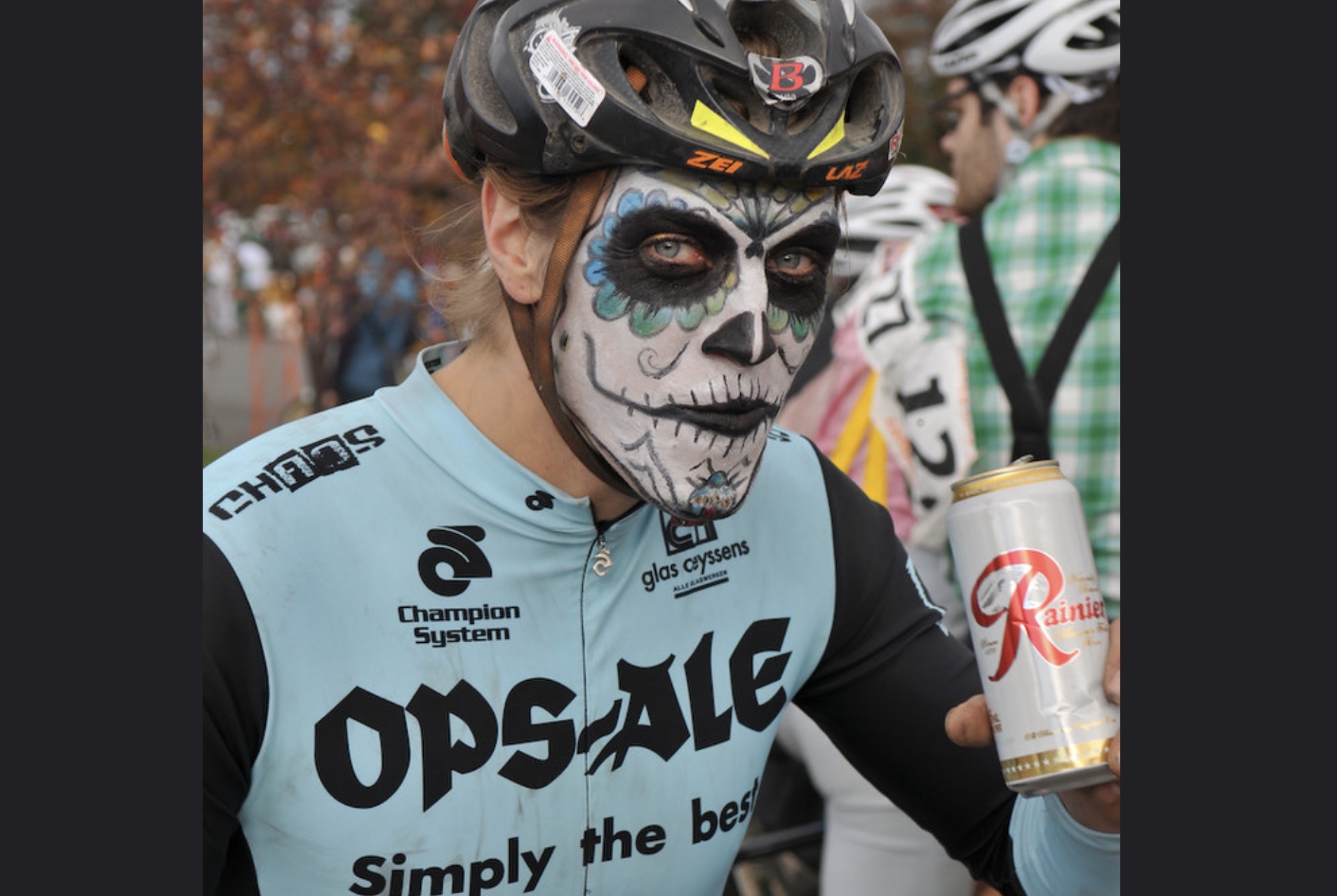


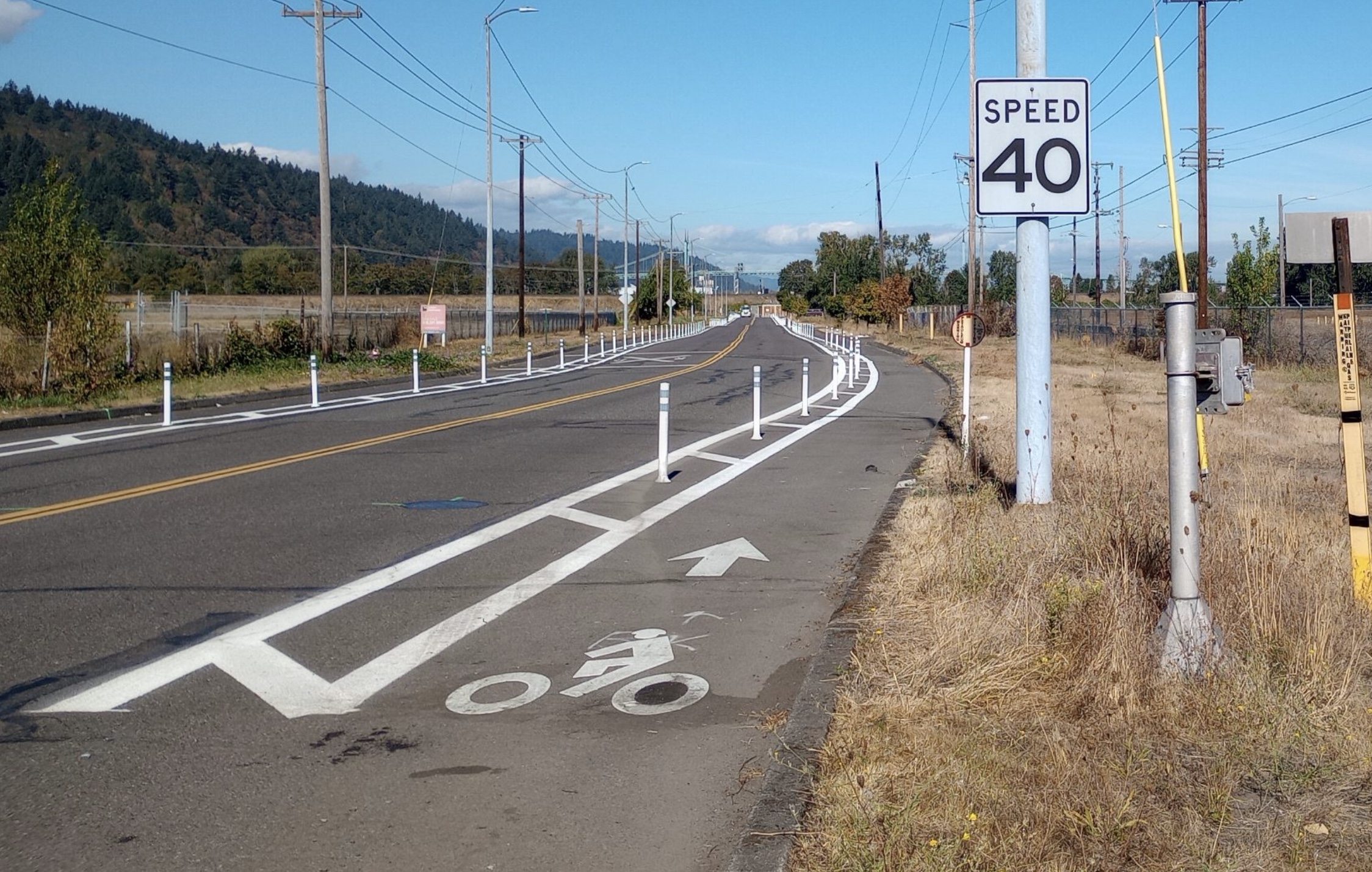
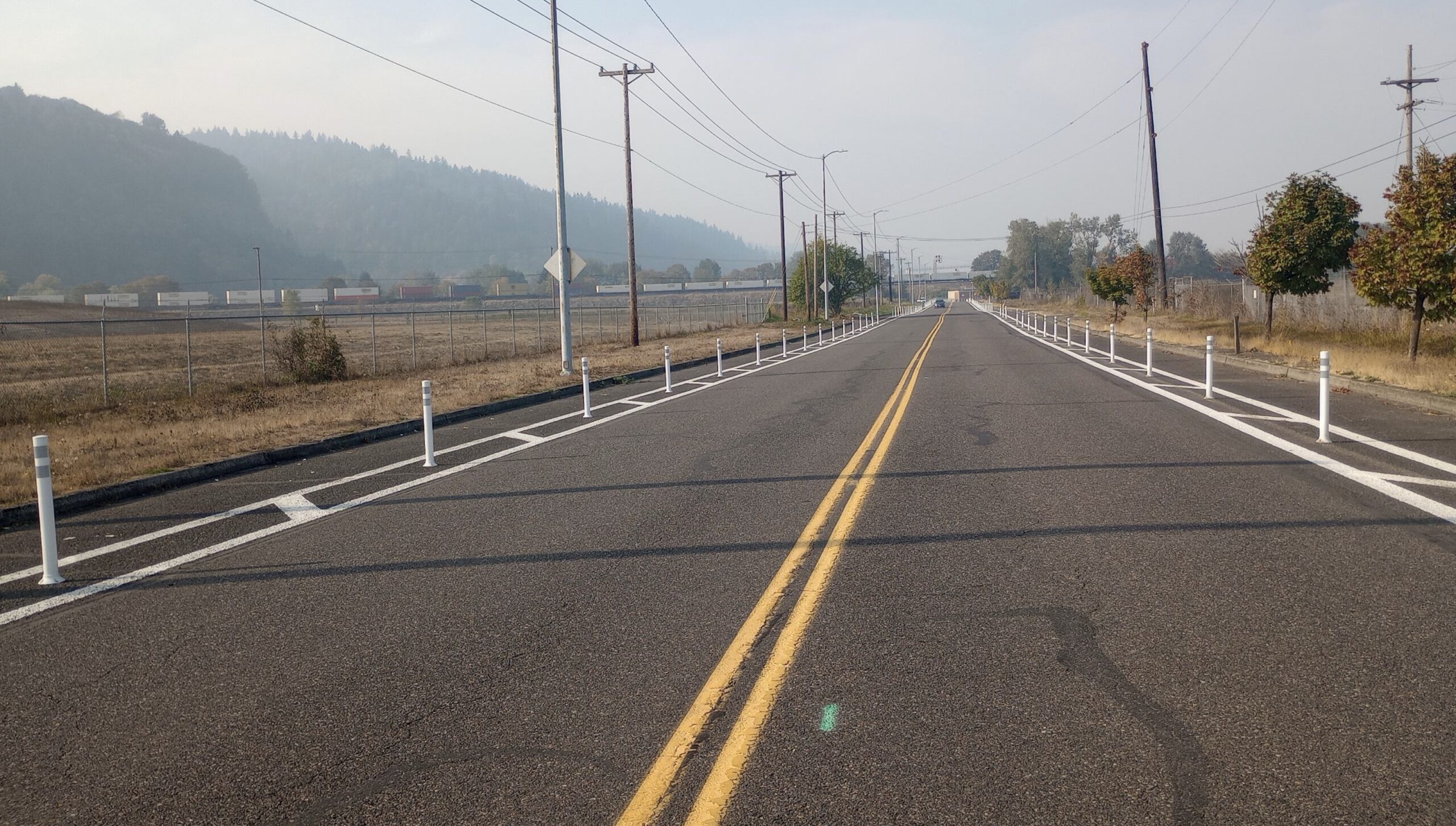
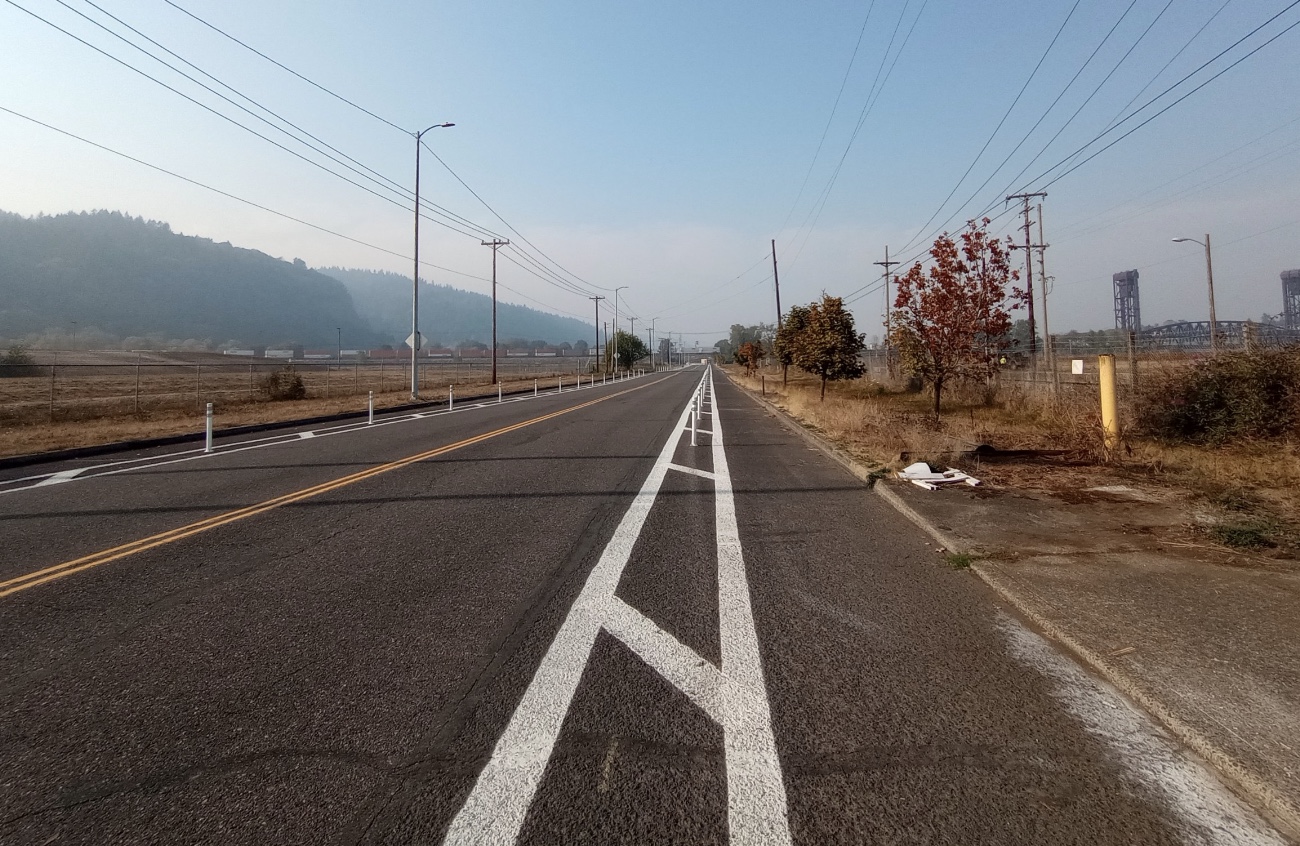
Last week a reader shared photos of some intriguing bike lanes. They raised my eyebrows for several reasons.
First of all, I hadn’t heard anything about the project. As someone whose job it is to know this type of thing, that felt weird.
And second, they were in a location where I have never heard of much cycling demand ever. Not that I believe we must demonstrate the presence of bike riders before building infrastructure for them (just like we don’t have to show how many people swim across a river before we build a bridge), but this location was very curious.
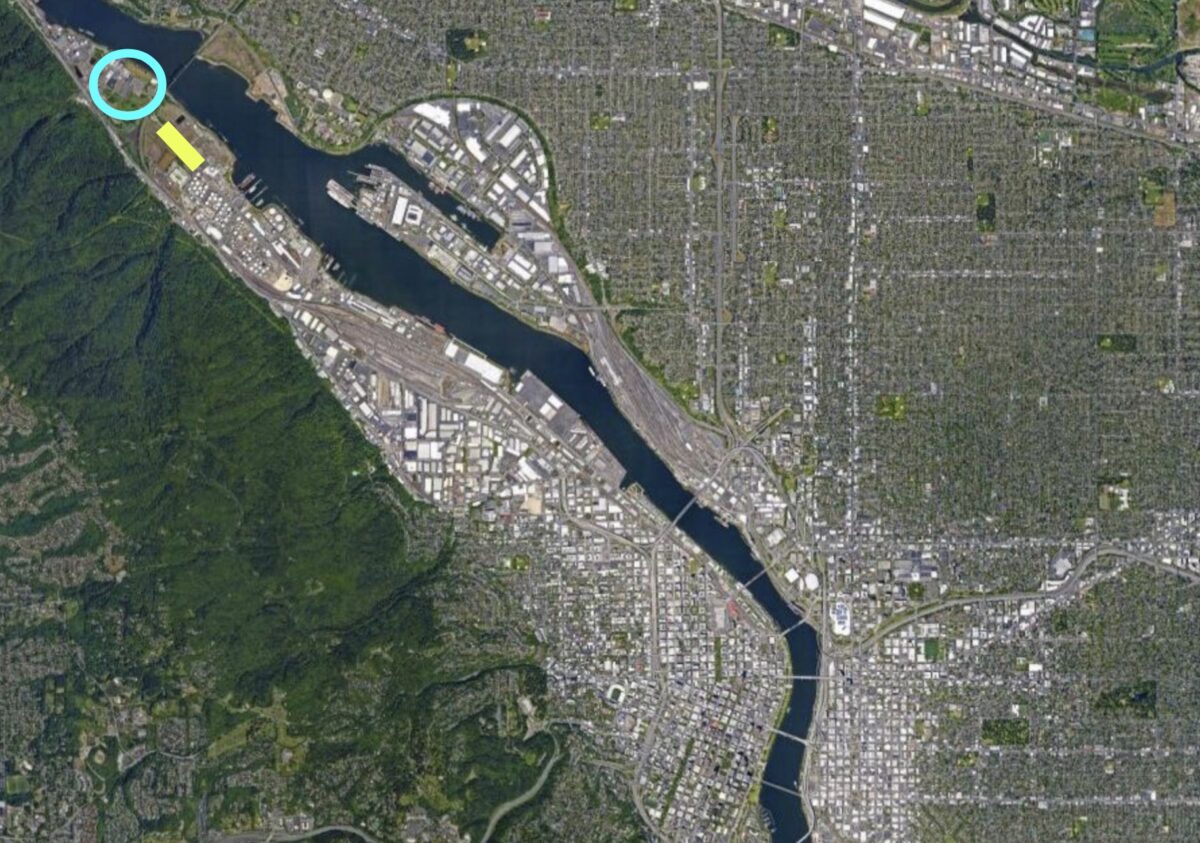
The bike lanes have been built in the far reaches of the Northwest Industrial district. Over five miles north of downtown, just about a mile south of the St. Johns Bridge on a section of NW Front Avenue just north of NW 61st Avenue.. It’s a place so empty it’s almost spooky, in a post-apocalyptic-god-I-wonder-what-type-of-hazardous-industrial-waste-was-dumped-here-100-years-ago type of way.
The only reason you’ve likely ever been near there is the Metro waste transfer station nearby (a.k.a “the dump”). When I first saw the photos, a voice inside my head said, “Wow! I can’t believe PBOT built these to prevent people from parking RVs.” I knew this this location had become a major spot for folks to camp — very similar to the large encampment of vans, trailers, and other vehicles parked on both sides of NE 33rd south of Marine Drive. At that location, PBOT recently helped clear dozens of campers from the road.
Wanting to check my hunch, I emailed Portland Bureau of Transportation spokesperson Dylan Rivera.
Rivera got back to me this week. He didn’t say anything about the campers that used to be there. He said a private company conceived of the idea. Here’s Rivera’s explanation:
“Siltronic approached us about the need for a bike lane there, adjacent to land the company owns. We found that the Bicycle Plan for 2030 does call for an in-roadway, separated bike lane on NW Front Avenue [the blue-and-white striped line in the map above]. Since the company was able to design and build it to our specifications, we were more than happy to accept this new addition to the city’s bike network.”
Siltronic is a massive, German company that makes “wafers made of hyperpure silicon, the basis for modern micro- and nanotechnology.” They employ 4,300 people and have offices around the globe. Their Portland headquarters sits on the banks of the Willamette River, adjacent the Burlington-Northern Railroad Bridge, and just north of these nice new bike lanes.
This isn’t the first time PBOT has happily accepted private help to fund and build bike infrastructure. Apparel giant Adidas funded and built the bike lanes on N Greeley Avenue in north Portland, and a developer paid for a Biketown station back in 2018.
It’s also not the first time Siltronic sprung for bike-related infrastructure near their property. The last time I was at this location on NW Front I went out to inspect a beautiful piece of the Willamette River Greenway path that runs right outside their offices (see map). It’s private property, but I’ve since confirmed that they paid for and built the paths with their own contractors.
It’s no surprise that PBOT wants all the help they can get to build out our cycling network. In fact, when he got back to me this week, Rivera included a pitch for other companies to step up. “We welcome offers from landowners who want to bring their street frontages up to modern standards that will help meet the city and the community’s goals for access to biking and walking. Check the map and give us a call!,” he wrote.
The “map” Rivera refers to is the City of Portland Recommended Bicycle Network map that was adopted with the Bicycle Plan for 2030 in 2010.
Any other takers out there?
— By BikePortland subscriber, Bike Loud PDX volunteer and southeast Portland resident Missy LeDoux
“Be safe out there!”
I hear that phrase almost every day. In the past, I’d get the occasional “drive home safe!” after an event, but I could usually leave the grocery store, the library, or my office without anyone remarking on my safety. But that was when I was in a car. Now I’m on a bike.
When I meet up with friends to see a movie, I hop on my yellow vintage Raleigh mountain bike, adapted for city streets, fitted with tires perfect for Portland’s roads, potholes, and speed bumps.
It’s the default thing people say to a 20-something woman commuting home in what’s viewed as an unsafe fashion. So I need to point out why this way of speaking isn’t helping anyone – and what cyclists actually want instead.
I’ve lived in the Portland metro area for most of my life. I’m in my 20s, white, and female. I live on Hawthorne Blvd, one of the busiest streets in Southeast Portland. I used to drive every day. Now I get around mostly by bus, walking – or on my trusty bike. And now, when I leave an event – helmet and pannier bags in hand – I’m almost always met with that response:
“Be safe out there!” Or this one: “Are you sure you don’t want a ride?” Or even: “Seriously? You can’t do that, it’s dark out. I’m giving you a ride.”
Sometimes it’s friends or family members, who I know mean well. Sometimes it’s complete strangers, fully unsolicited. Just two nights ago, a random man walking toward his car turned and looked at me as I biked past him on the greenway and shouted, “Get home safe, lady!”
You might be thinking: what’s wrong with that? They care. They want you to be safe. It’s a nice thing to say. And I know that everyone means well, from close friends to strangers on the streets. If you’ve said this to me before, don’t worry – I didn’t write this article as an elaborate clap-back. I’m not here to call you out by name. I probably took it in stride and focused on the intention you put behind it.
But it keeps happening. It’s the default thing people say to a 20-something woman commuting home in what’s viewed as an unsafe fashion. So I need to point out why this way of speaking isn’t helping anyone – and what cyclists actually want instead.
Let’s look at that phrase again. This is going to get pedantic for a second. Bear with me.
“Be safe out there!” is a complete sentence. It contains an implied subject: the word “You.” “[You] be safe out there.” As in “You” the cyclist.
The statement uses the imperative tense, also known as the command tense. “[You] be safe out there.”
It’s saying: “You need to behave a certain way.” No matter how kindly it’s said, it’s an instruction. Do you see the problem?
It implies that the safety of the cyclist is their own responsibility. It implies that when I bike home, it’s my job not to get hit by a car. It implies that I could force a driver to look over their right shoulder before making a turn. That I could make them hit the brakes. That I could stop several tons of metal propelled by burning fuel from crashing directly into my unprotected body. That in the battle of human vs. machine, some small lights on my bike and a white line on the pavement will be enough to protect me.
A quick side note. I’m not throwing away my responsibilities as a cyclist here. I’m aware that I need to take safety precautions – and I do. There are two lights on the front of my bike, one light on the back, bright yellow and pink pannier bags attached to my already bright yellow bike, high-visibility reflectors, and of course, a good quality helmet expertly fitted to my head. I stick to bike lanes and greenways as much as I can (despite my legal rights in Oregon). I signal when I’m going to turn, I’m aware of my surroundings, and I give cars plenty of room.
Whether these precautions should be necessary is another topic, but regardless, I take them. I’m doing my part.
But I’m not safely tucked into a giant cage designed with airbags, seatbelts, and emergency brakes. I’m muscle and marrow balanced on a thin aluminum frame. I’m about as protected as a baked potato wrapped in tin foil. There’s an unmistakable power imbalance at play here.
When we put the safety of cyclists on their own shoulders, we ignore the disparity between the privilege of car drivers and the vulnerability of cyclists. Defensive Driving puts it like this: “The worst that a motorist will get in a car-bike collision is a dent in their car, the best that a cyclist can hope for is to live.”
Your actions behind the wheel are exponentially more powerful than my actions at the handlebars.
Lots of people tell each other to get home safe when they leave an event, especially at night. When drivers say it to each other, they’re thinking about other cars on the road who might run a red light or swerve into their lane. But no one reminds drivers to care about the safety of cyclists.
Despite the obvious vulnerability of cyclists and the clear protectedness of cars, drivers are only ever cautioned about… other cars.
No one ever tells drivers, “Make sure to give cyclists space on the road.” No one says “Have a great night, and remember to check the bike lane before you turn!” But drivers’ actions impact cyclist safety more than any action a cyclist could take. One small choice made by a driver could undo every safety precaution a cyclist took that night. It only takes one second of distracted driving, one drift into a bike lane, one right turn where you forgot to check your mirror.
According to the CDC, “Every day, almost 3,700 people are killed globally in crashes involving cars, buses, motorcycles, bicycles, trucks, or pedestrians. More than half of those killed are pedestrians, motorcyclists, or cyclists.”
My helmet might save my life if I accidentally hit a pothole and eat it on the pavement. It won’t stop the force of a 5,000-pound SUV slamming into me. Your actions behind the wheel are exponentially more powerful than my actions at the handlebars.
Want your cyclist friends to get home safe? Stop telling them. Start driving in a way that makes the roads a safer place for everyone.
Here are some things cyclists actually want you to do:
Telling cyclists to be safe on their ride home doesn’t accomplish anything. What helps is drivers learning how to make the roads safer for cyclists. Focus on your own actions. Talk to the cyclists in your life and learn what they need from you. Maybe they aren’t going to dissect your well-intentioned words in an article like I did. But they need you to do your part in helping keep them safe. They’re already doing theirs.
The Portland Bureau of Transportation expects to complete three new crossing treatments in the Lents neighborhood by the end of this fall.
The new crossings will help people who live, work, and play in this southeast neighborhood get around with a bit less stress in an area known for dangerous streets and a dearth of infrastructure for people who are not driving. One of the projects will come with new bike lanes on SE 92nd near Lents Park.
It’s one of the first projects to hit the ground that was paid for with revenue raised by a new auto parking fee. PBOT says funding for the Lents Crossing project comes from their Parking Climate and Equitable Mobility Transaction Fee. That 20-cent per transaction parking meter fee is just one of many recommendations adopted by city council as part of PBOT’s Pricing Options for Equitable Mobility plan. In December 2021, the PBOT staffer who worked on the fee increase said the goal of the fee (and the excessively long name) was to, “Help people think there are some climate and equity impacts of their decision to drive downtown and park downtown.”
Fees collected from car users downtown, will now be spent in east Portland. In a statement about the crossing projects yesterday, PBOT said that should, “send a price signal about the externalized costs of driving.”
Here’s what’s in store for all three crossings according to PBOT:
At SE Rural Street & SE 92nd Avenue, improvements include a new striped crosswalk with a median island and new ADA ramps.
At SE Woodstock & SE 86th Avenue, improvements include a new striped crosswalk with new ADA ramps for safer pedestrian traveling.
At SE Ellis and 92nd Avenue, improvements include adding bicycle lanes and pedestrian safety components such as existing sidewalk improvements, existing ADA ramp improvements, a new crosswalk to and a median island.
The crossings could also help assuage concerns from Lents neighborhood school advocates.
Just this week, the Portland Public School board adopted new boundary changes and shifts in program locations for Lent Elementary School. The board voted 5-2 and heard testimony at their meeting from Oregon State Representative Khanh Pham. Rep Pham was there because of a change that will move students from Lent Elementary about one mile west to Marysville Elementary. One of the chief concerns of Rep Pham and others (including PPS School Board student representative Byronie McMahon, who you might recall attended the Alameda Elementary bike bus last month and who voted no on the changes) was a concern about traffic safety for students who will now have to cross SE 82nd to get to school.
“82nd Ave is one of the deadliest corridors in our state… and crossing a 5 lane highway is always going to be dangerous, even for adults, much less elementary school students,” Rep Pham wrote in an email to the PPS Board prior to the meeting. “I shudder to think about the inevitable traffic accidents that will happen to some of our youngest and most vulnerable students.”
The Lents Crossing Project is part of PBOT’s Safe Routes to School program. Learn more on the official website.